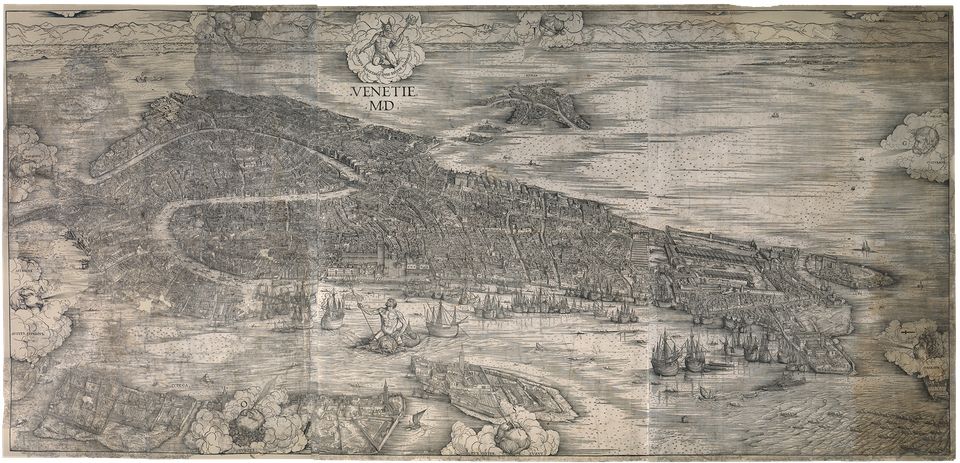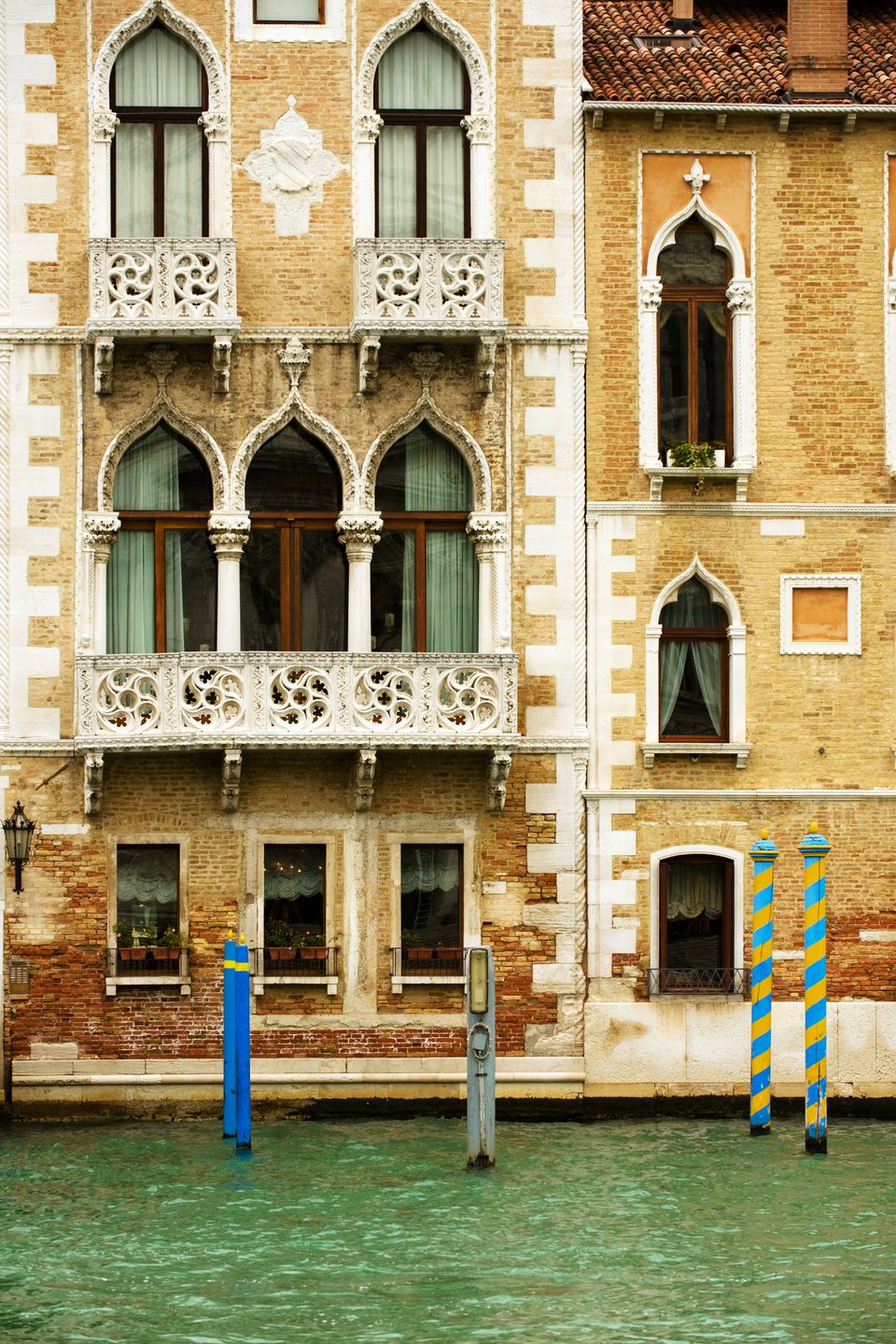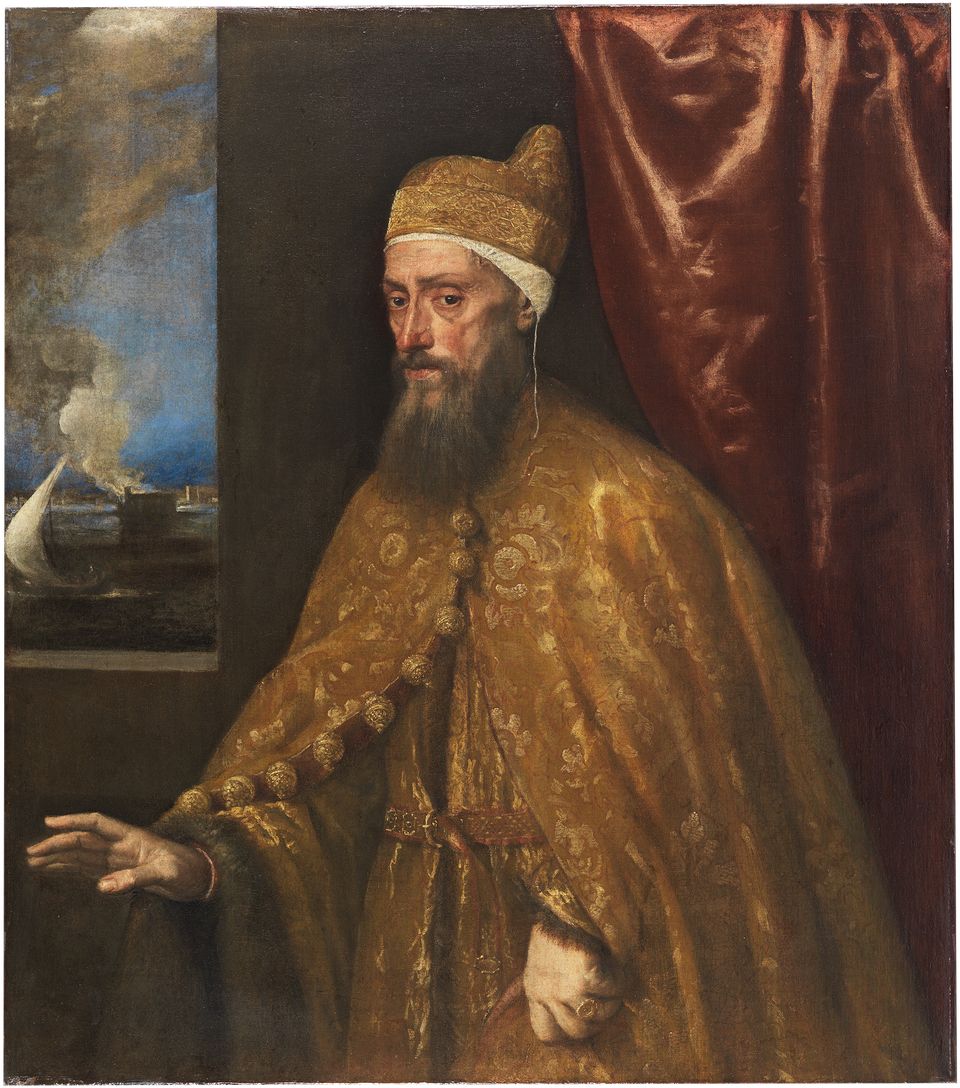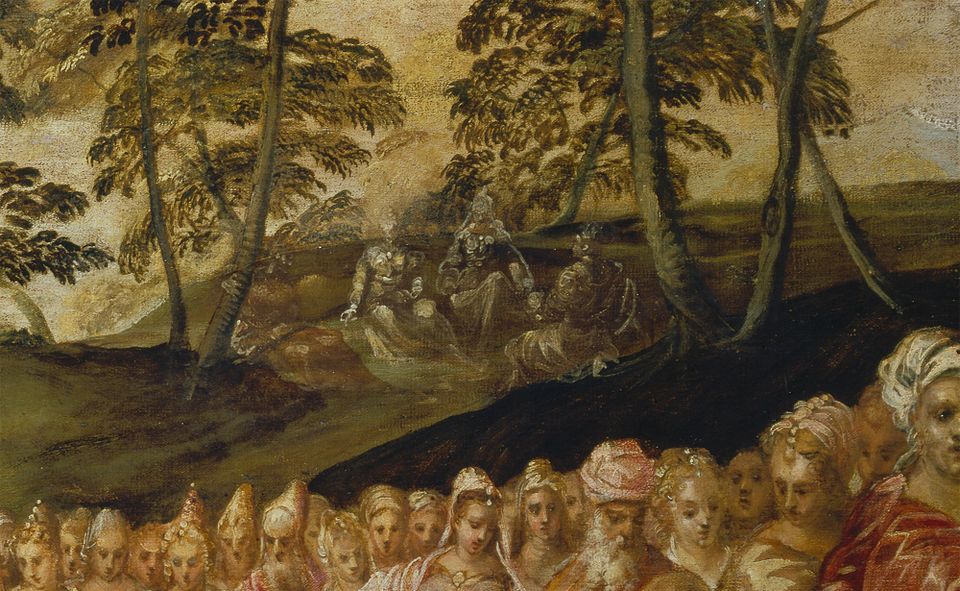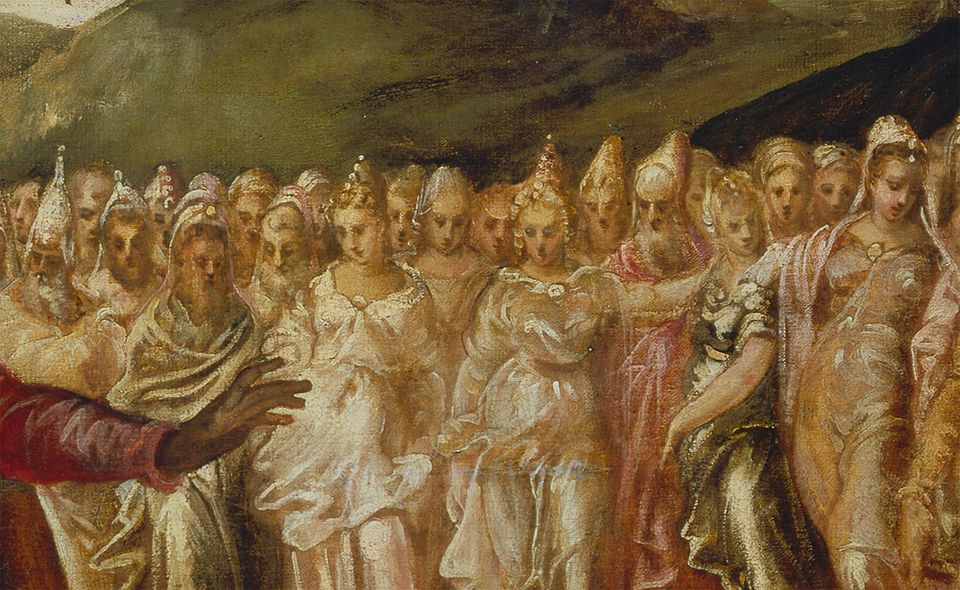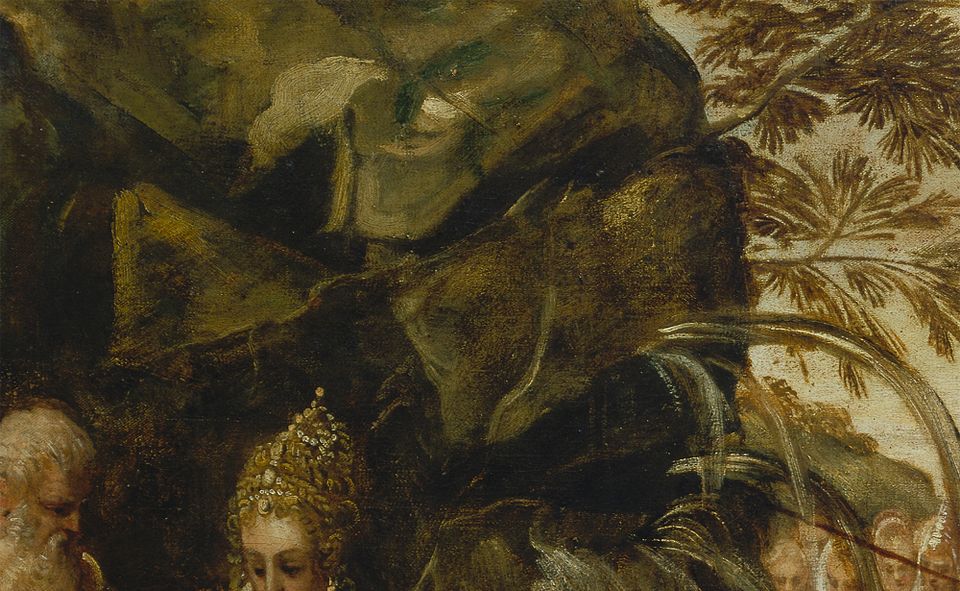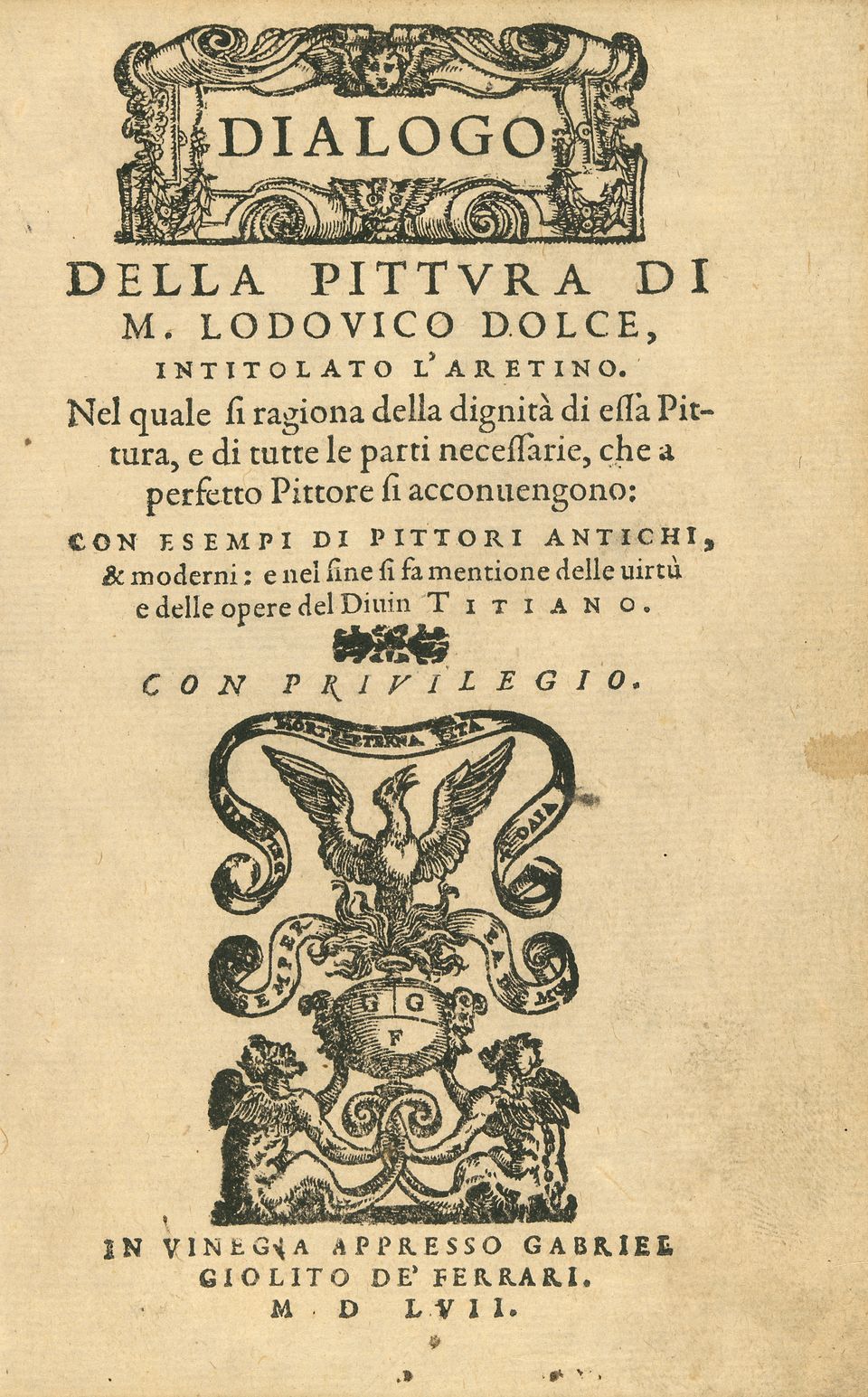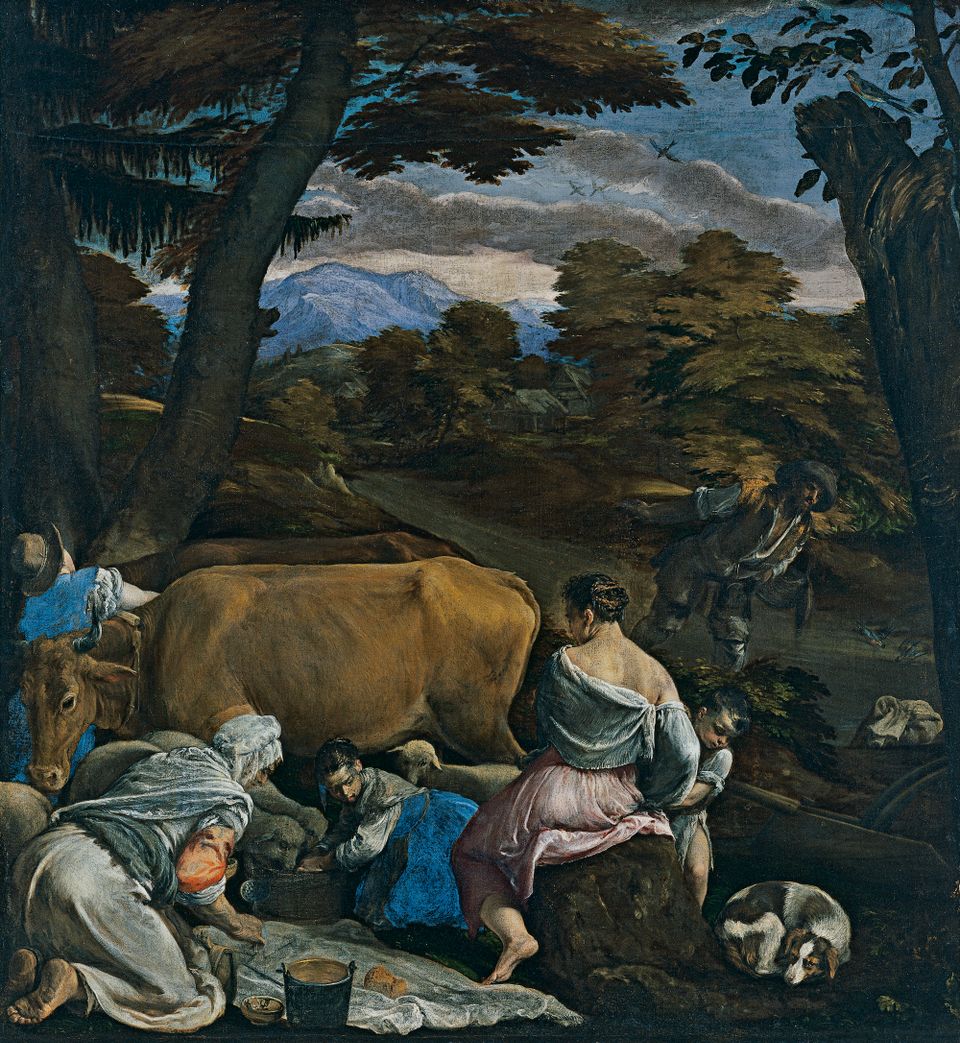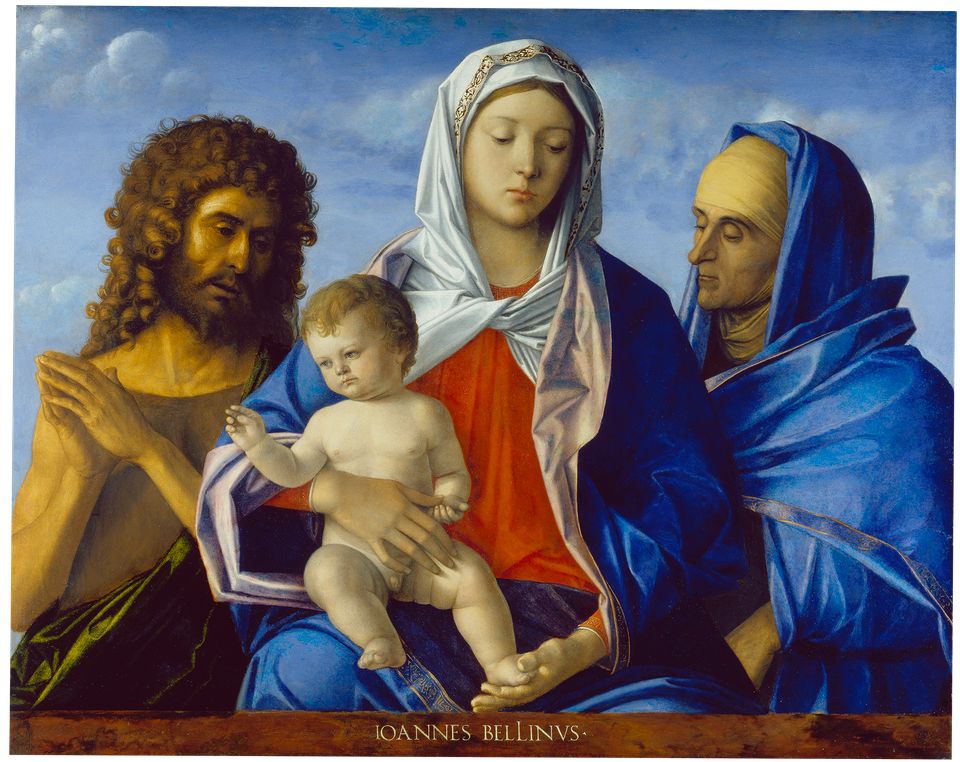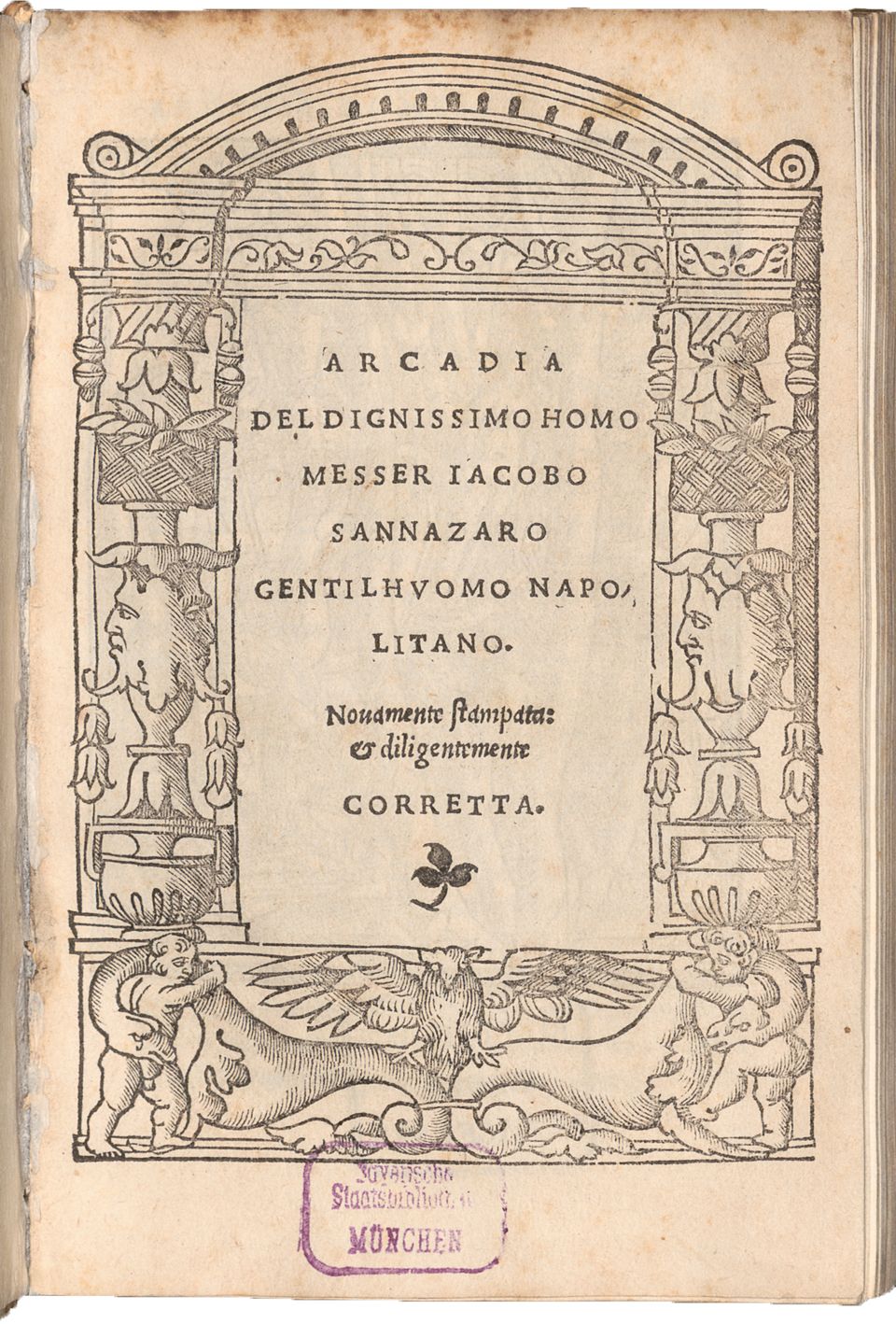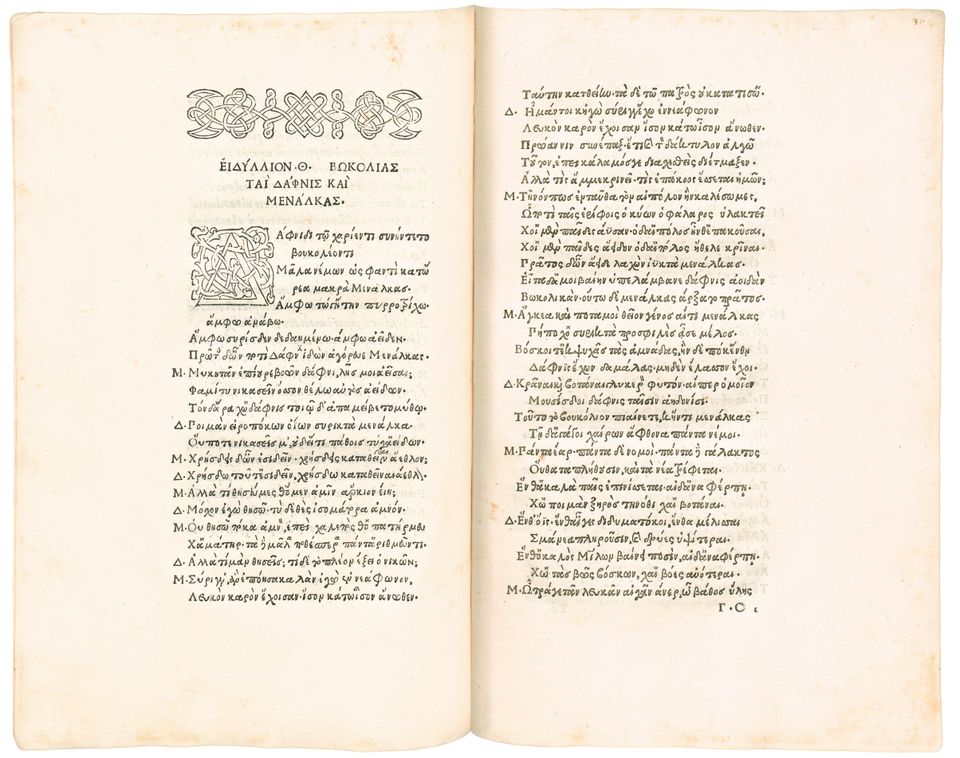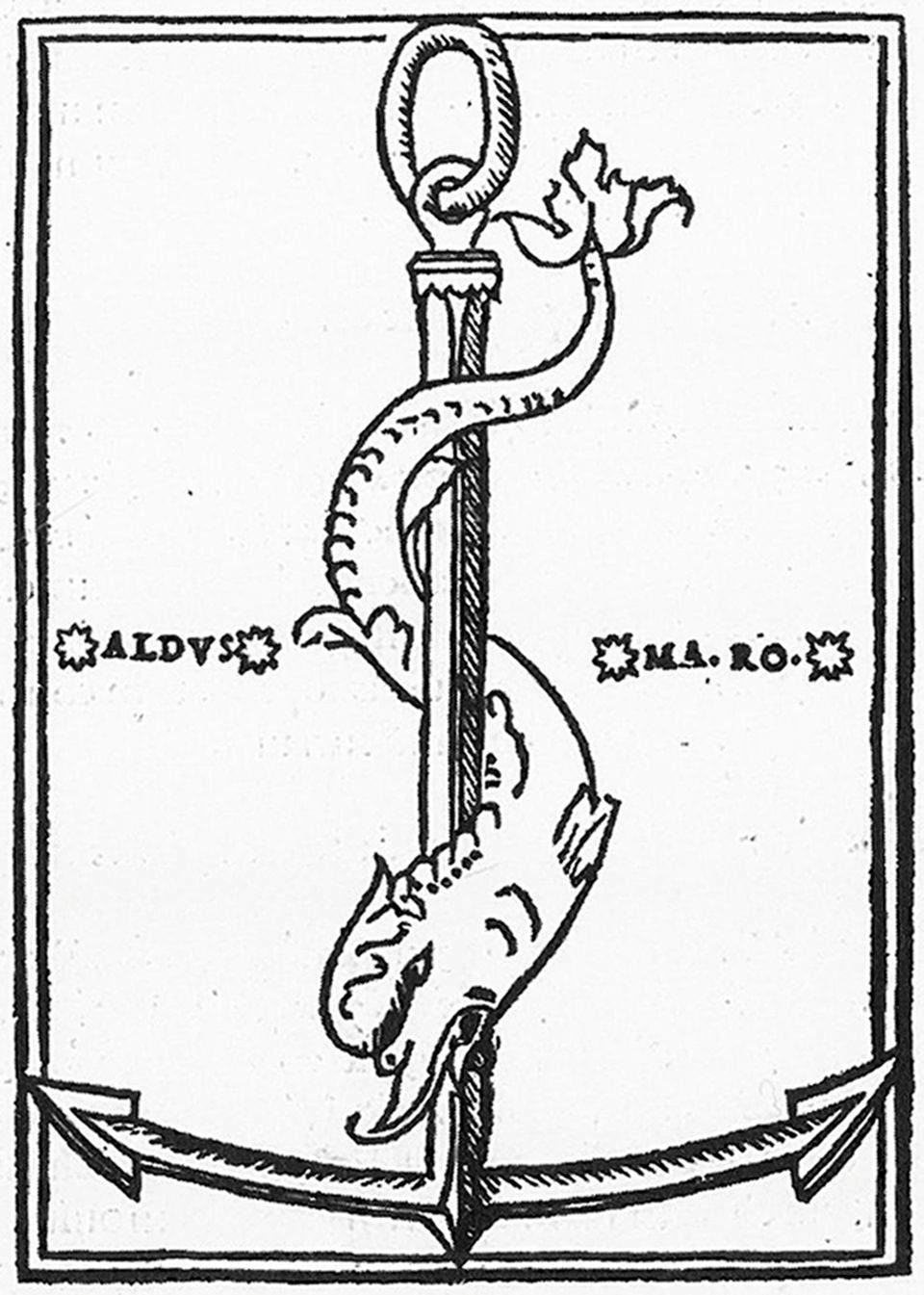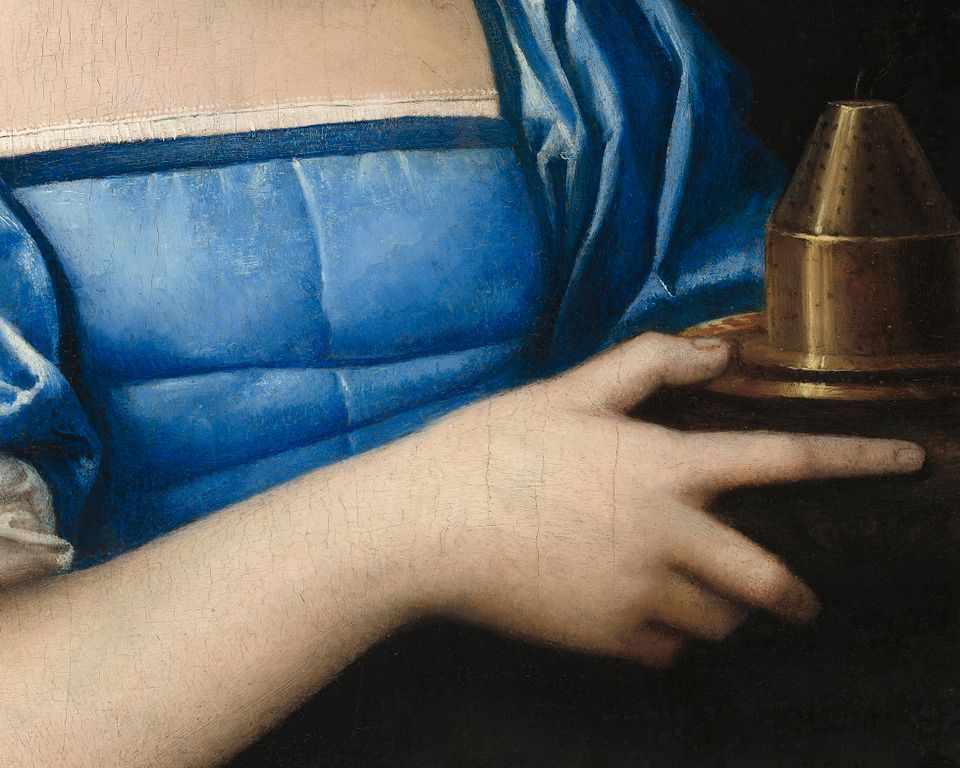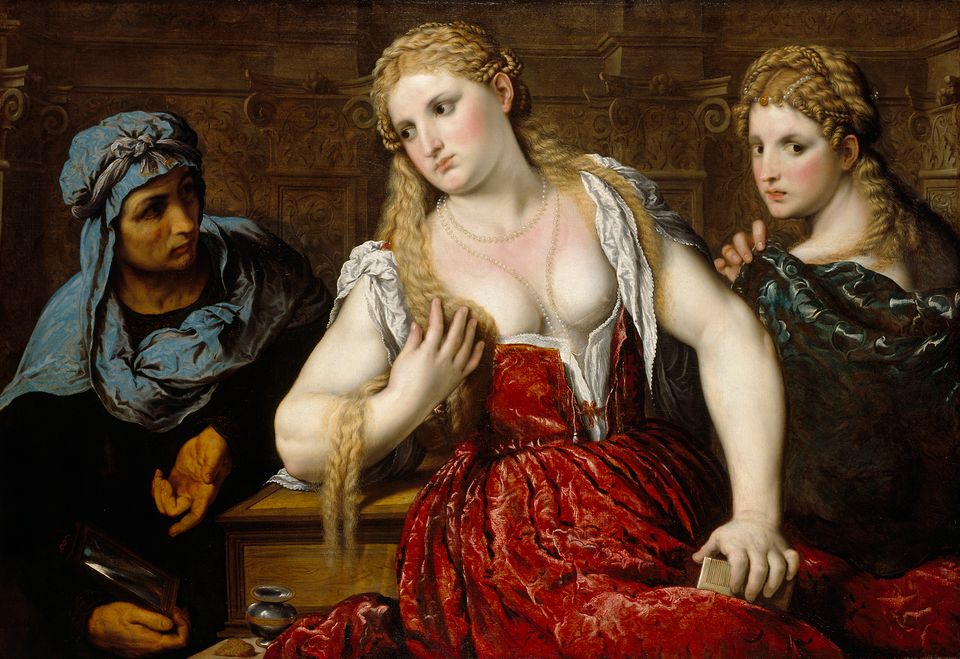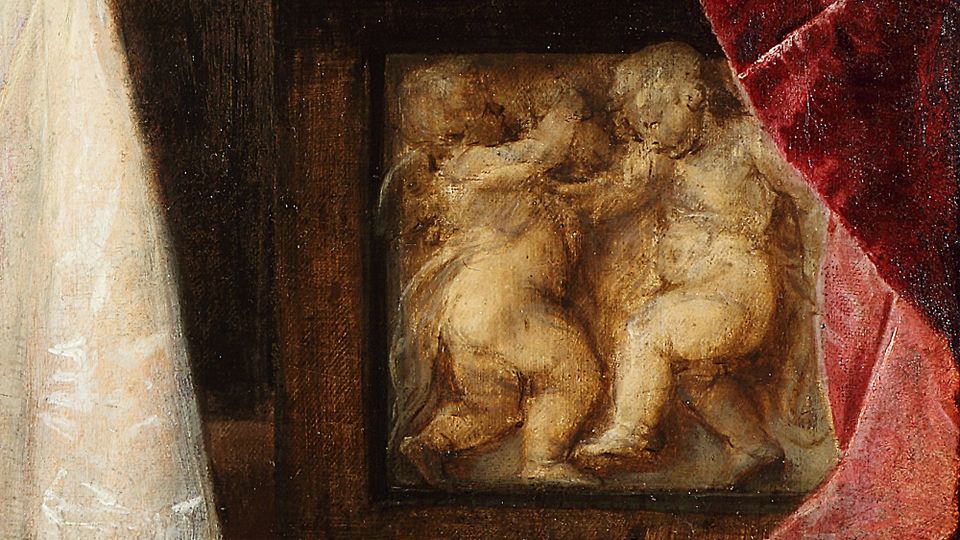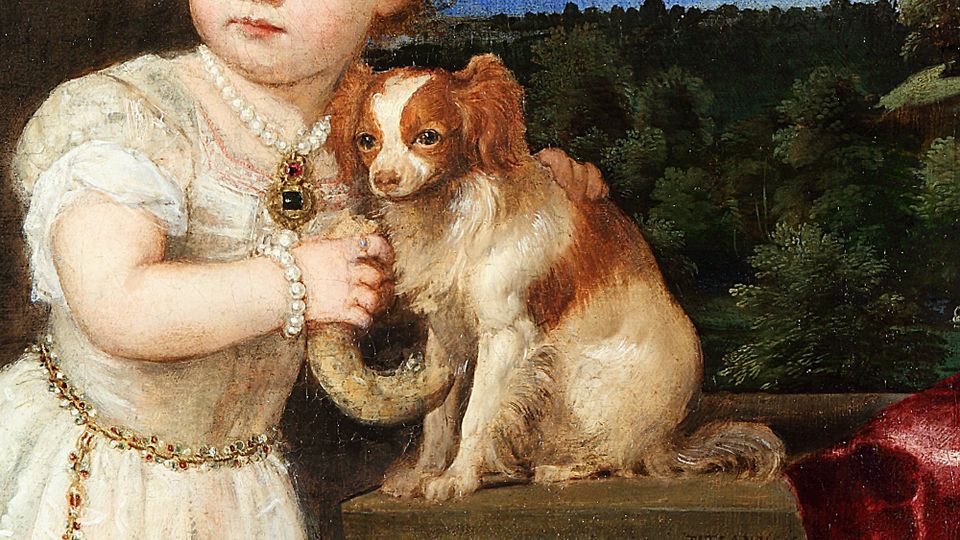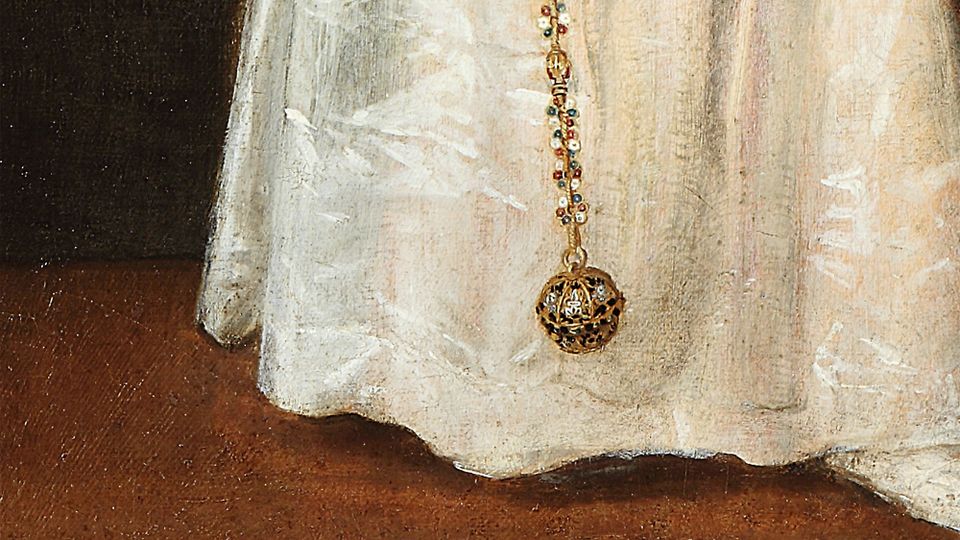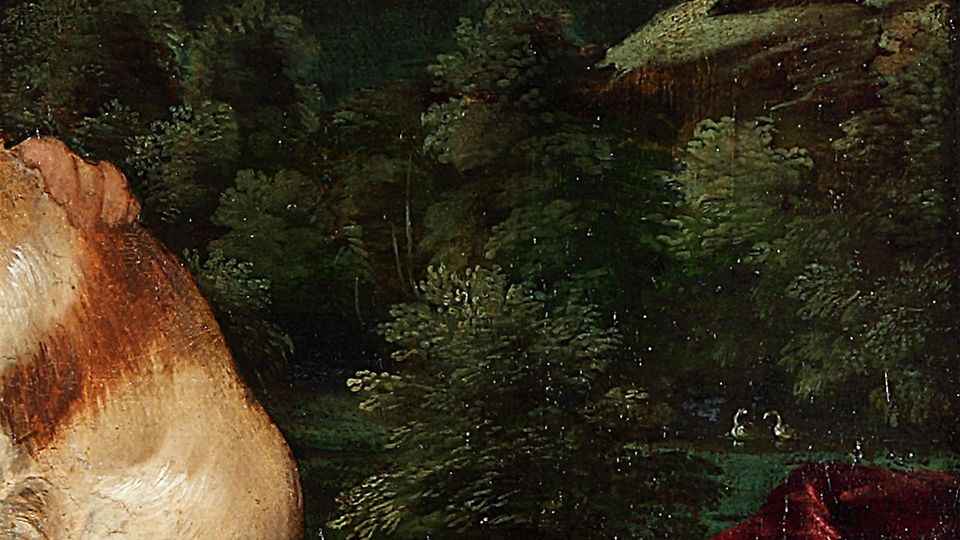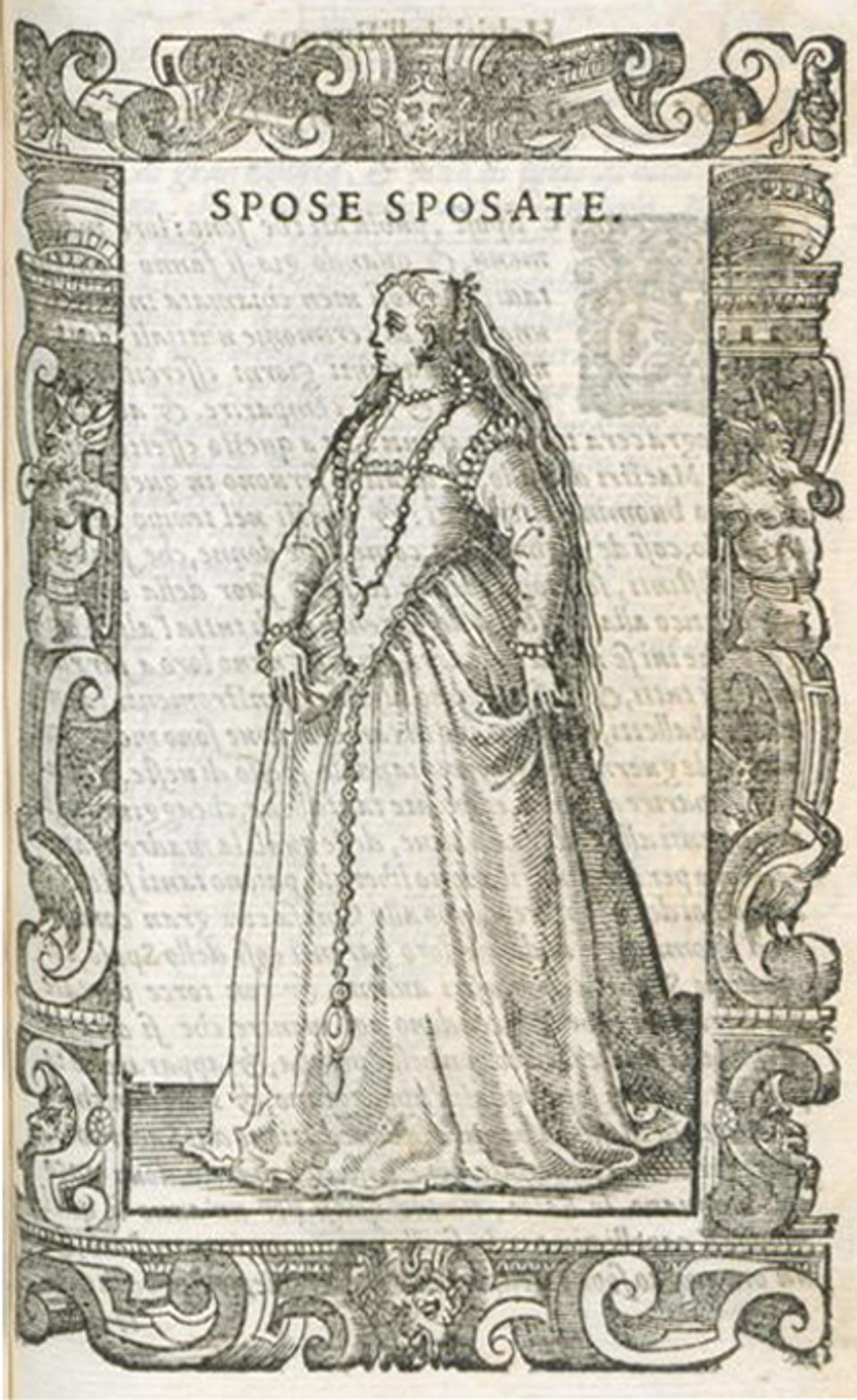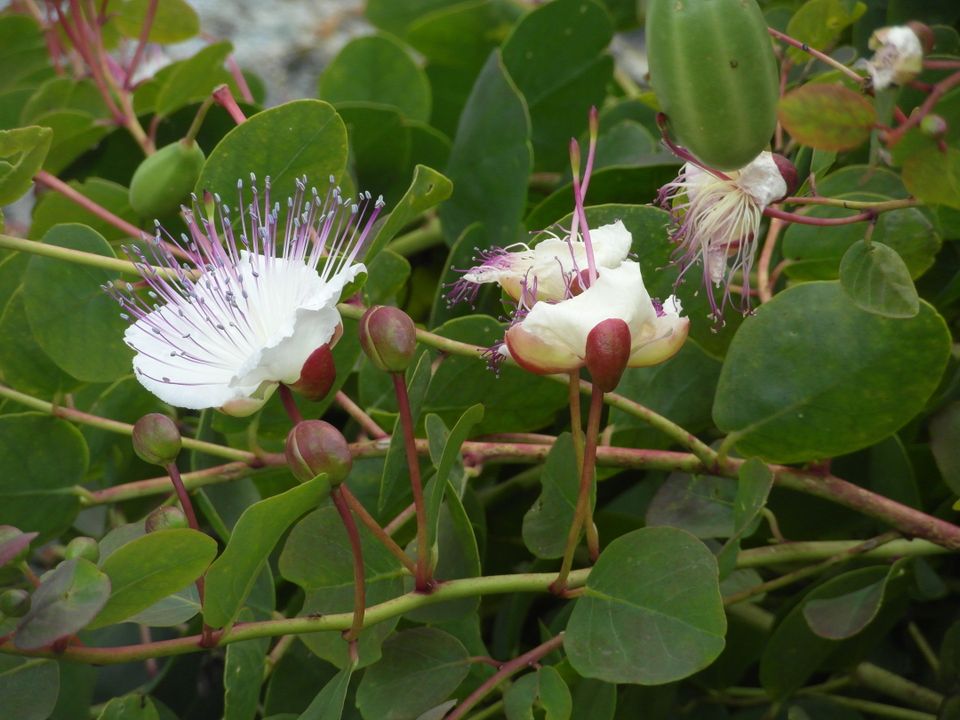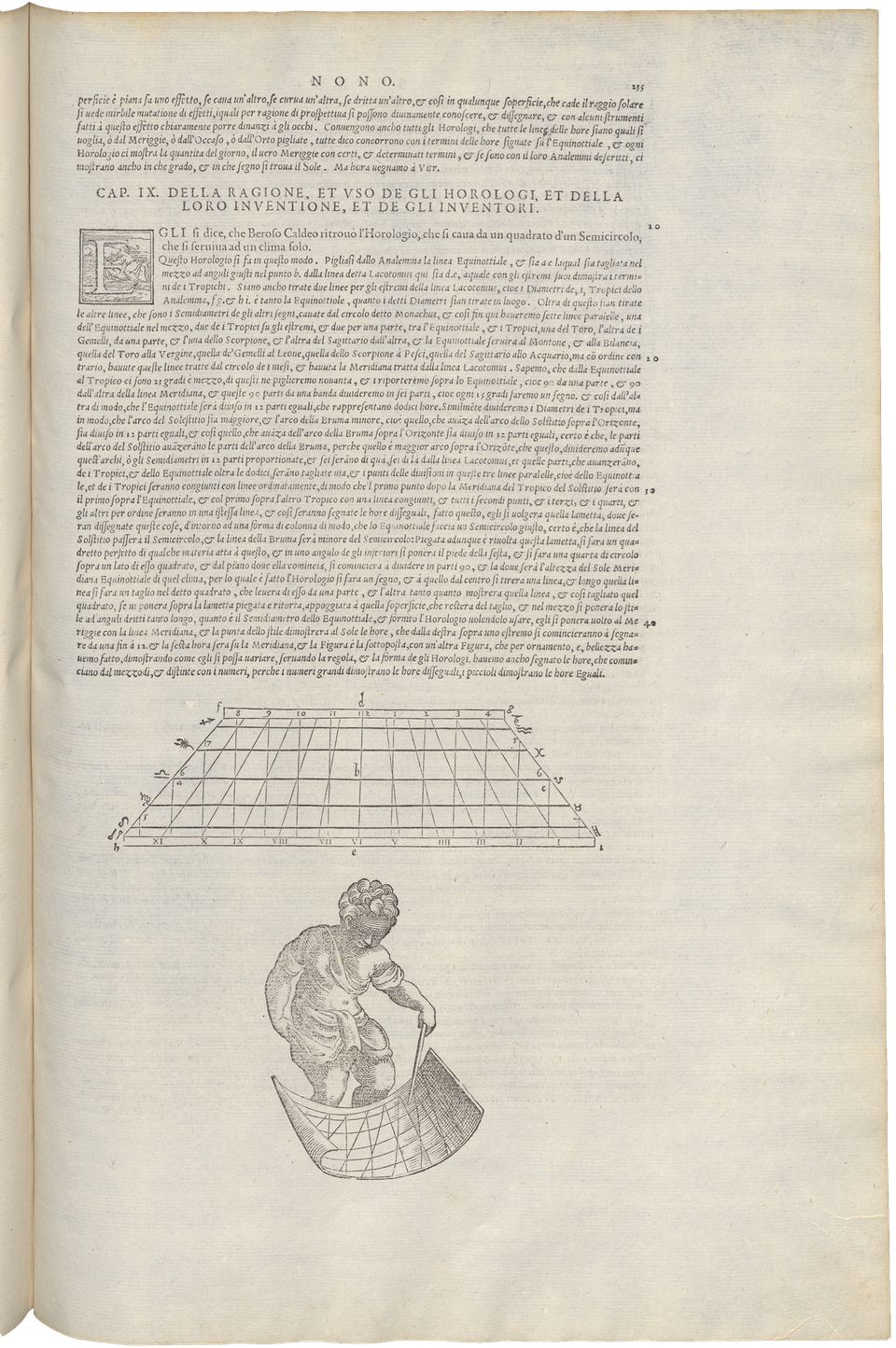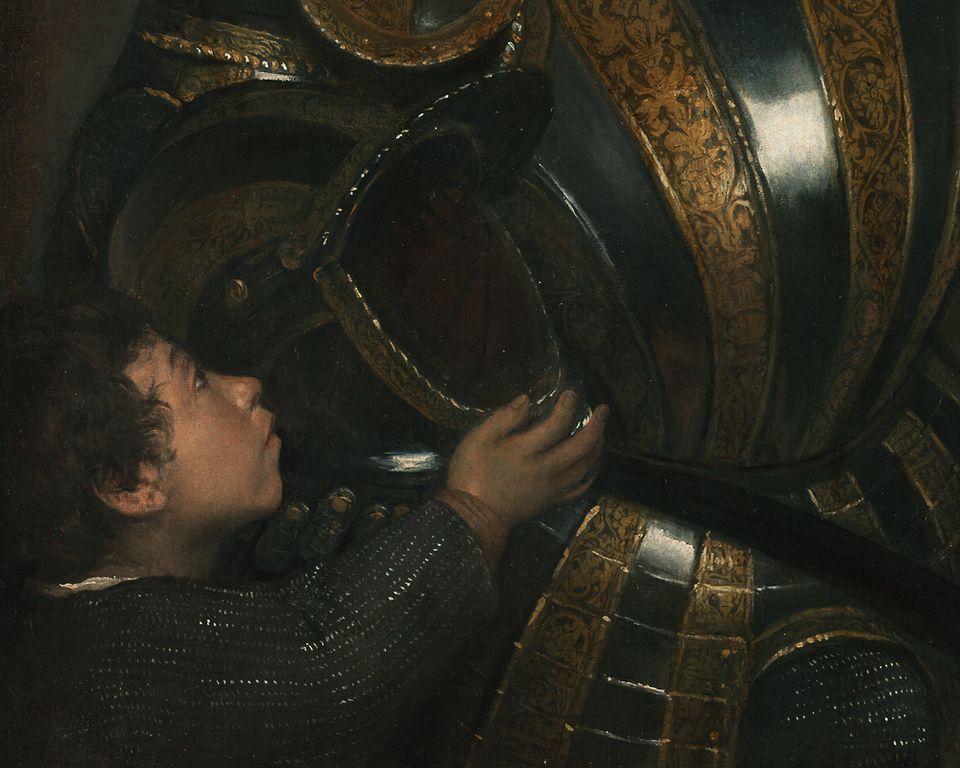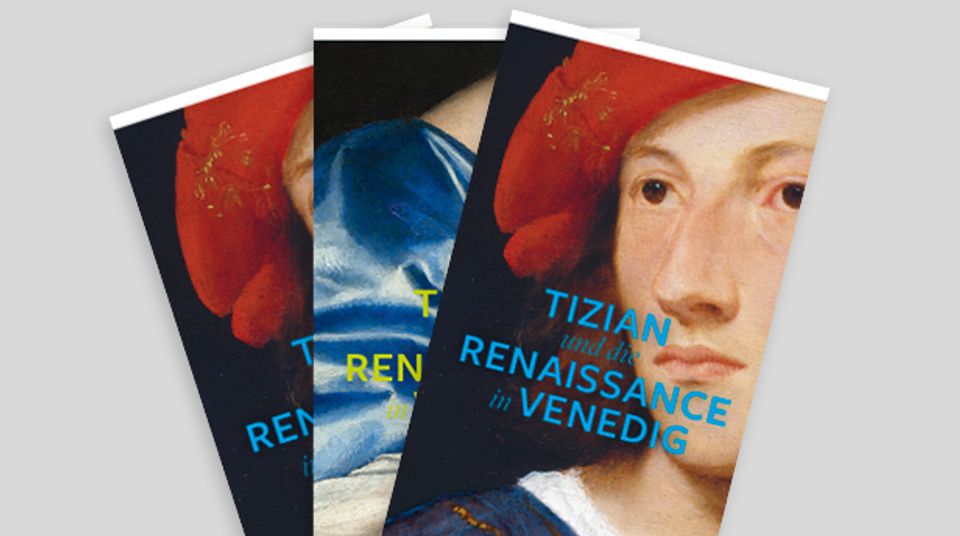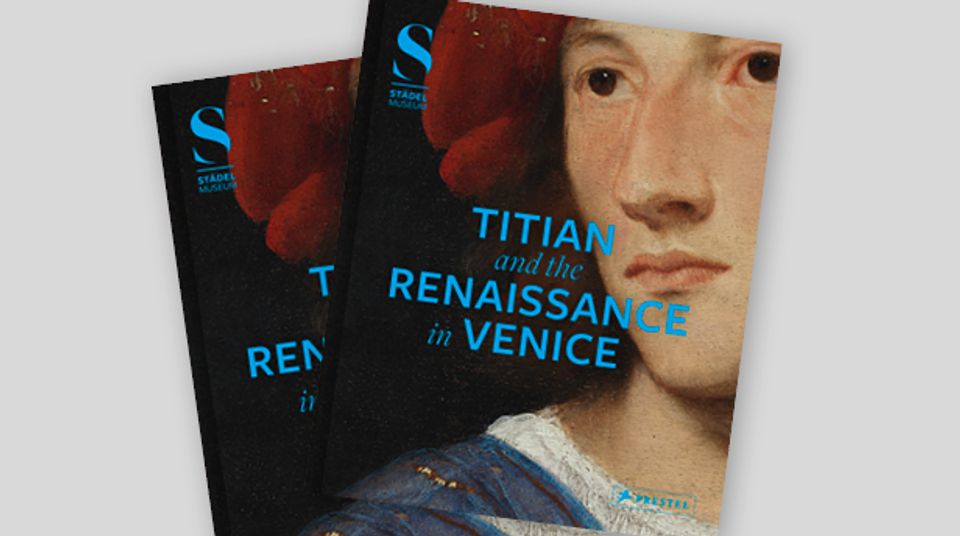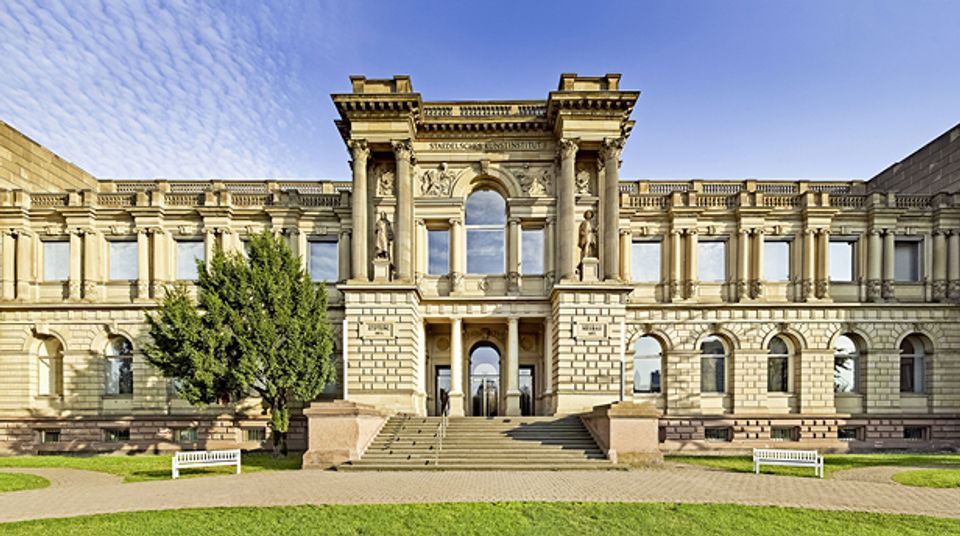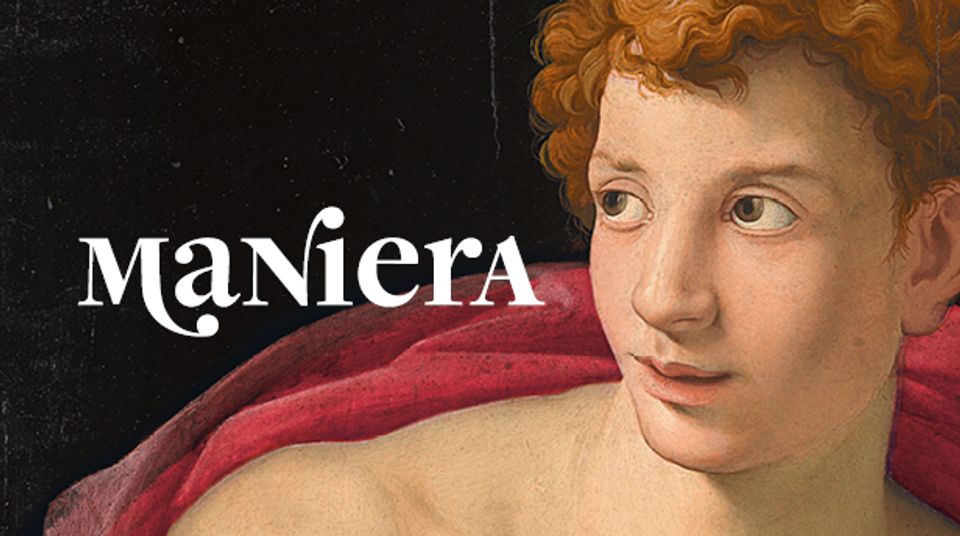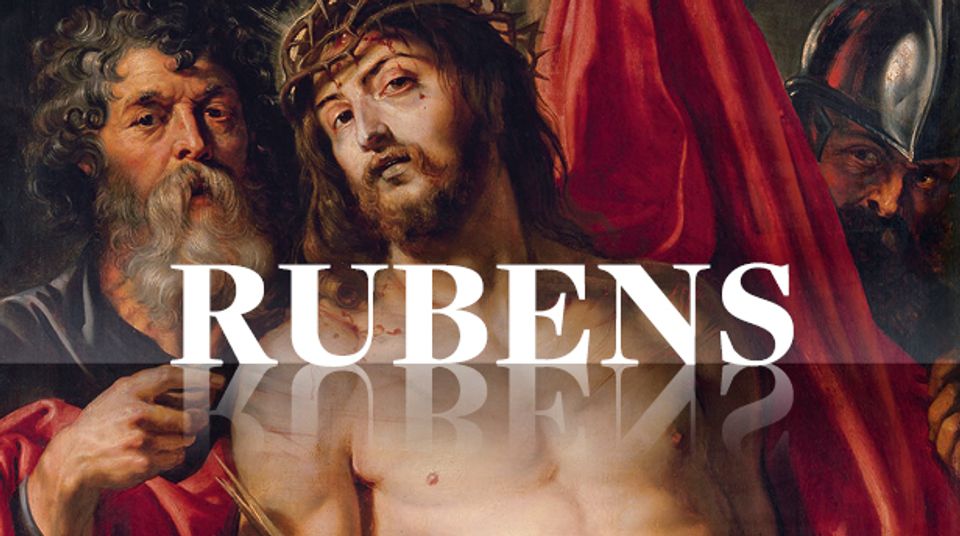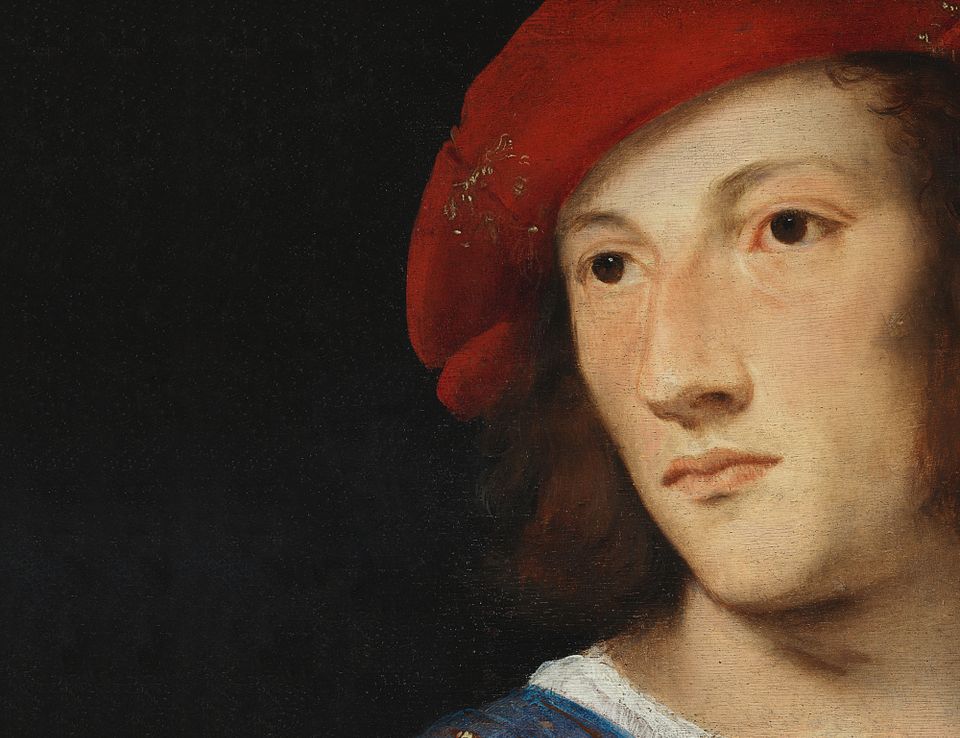
JavaScript is currently disabled. You can use the Digitorial, but get a much better experience with JavaScript enabled.
It is the cradle of ideas that made history. Time and again, Venice was the starting point for great innovations. A city of seafarers and merchants, Venice was a vibrant melting pot of diverse cultures from all over the world. The sixteenth century saw literature, music and art flourish. The singular quality of Venetian painting is encapsulated by Titian, one of the city’s most influential artists. Virtuoso colour, energy and a striking sense of animation make Venetian Renaissance art a fascinating visual experience.
Titian is not a painter (...) but a miracle!
Sperone Speroni, Dialogo d'Amore, 1542 Toggle credits
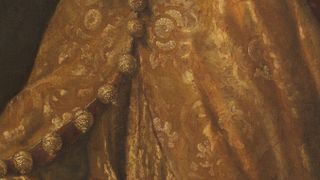
Venice
A Resplendent Republic
Venice – city without parallel! Reflected in the rippled surface of the maze of canals are the buildings’ shimmering facades, the gondolas and people. The atmospheric play of light and colour is unforgettable.
Some 30 million people from all over the world visit Venice every year. Gigantic cruise ships rock the architectural fabric of the city and jeopardise its fragile foundations. In the long run, centuries-old churches and palazzi are in danger of sinking beneath the waves and the sheer weight of people.
During Titian’s life (1488/90-1576) Venice was one of the world’s ten biggest cities. A republic, at times boasting a population of some 200,000 inhabitants, it was the beneficiary of a globe-girdling network of merchants and trading posts. La Serenissima – ‘the most serene’ – was the epithet applied to the proud city not just by the sea, but on it.
Palazzi and Canals
Art, music, literature and science – sixteenth-century Venice was a city of immeasurable cultural wealth.
A woodcut nearly three metres across! This enormous map of Venice was printed in 1500. It provides a bird’s eye view of the lagoon and shows Venice, shaped like a fish, surrounded on all sides by water. To record the position of landmarks, the artist and his assistants scaled the highest bell towers and looked down upon the sprawling alleyways and canals. And whenever this still did not yield results, they resorted to topographical survey instruments and, ultimately, their imagination. All the important sites of the splendid capital of the republic can be made out on this map.

A mercantile republic – not a kingdom or a principality. Venice enjoyed the reputation of being a liberal city. For this reason, it attracted people of widely different backgrounds and faiths. Anyone who was granted citizenship had a political voice and the right to vote – by no means a given in sixteenth-century Europe! The Venetian republic was presided over by the doge.
Power and wisdom
A lush red velvet curtain and sumptuous golden robes: The head of the Venetian republic is shown with all the pomp and circumstance his office commands.
Like the pope, kings and emperors, the doge of Venice was in office for life. However, his power was held in check by various political councils and committees. Today, the complex regulations governing the election of the doge and the administration of the city would be described as a system of checks and balances. The equitable division of power and the prevention of excessive concentration of power were the cornerstones of the republic.
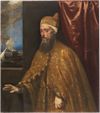
The Renaissance (French, ‘rebirth’) is considered a period of momentous change. The culture of antiquity became the model for a new value system and a new idea of man. More than any other country, Italy was the cradle of numerous scientific discoveries and cultural innovations. For the republic of Venice, however, the sixteenth century heralded the start of its slow decline. In 1453, the Ottoman Empire had conquered Constantinople. Venice’s influence in the East was gradually waning. Moreover, the discovery and colonisation of the Americas ushered in major geopolitical changes. European trade moved to the oceans, where Venice could not compete.
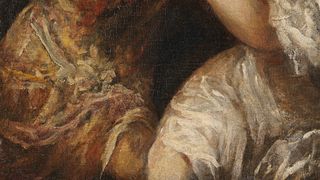
Colorito
Brushmarks and Colour
Dynamic brushmarks and expressive energy – Venetian Renaissance artists developed an unmistakeable style of painting.
A breath-taking evening sky – lush colours glow in soft transitions from orange to blue. They contrast sharply with the grave-looking man dressed in sober black. The box of dry pigments on the window sill alludes to the identity and profession of the sitter: He is Titian’s pigment merchant Alvise dalla Scala.
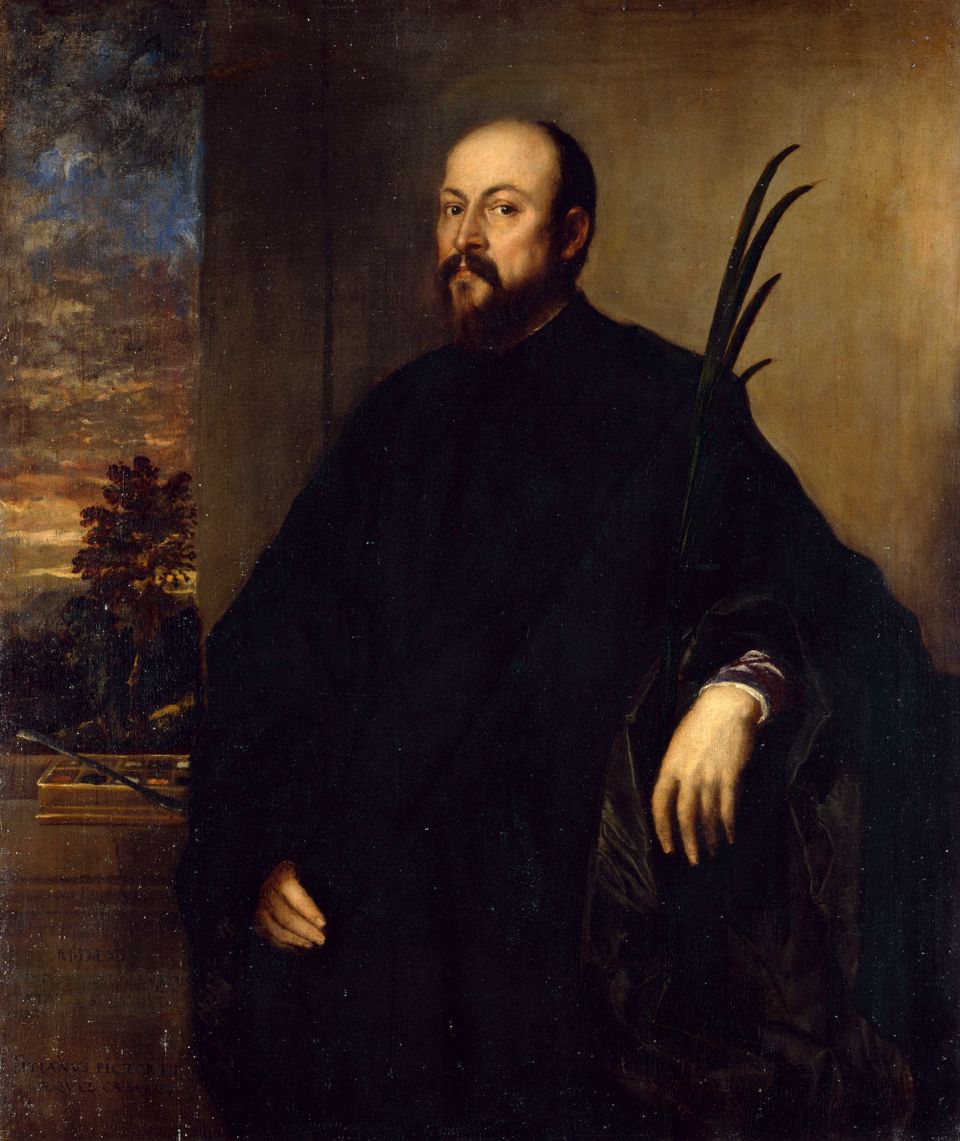
Oil on canvas, 138 x 116 cm, Staatliche Kunstsammlungen, Gemäldegalerie Alte Meister, Dresden, © bpk | Staatliche Kunstsammlungen Dresden/Elke Estel | Hans-Peter Klut
In Venice, the profession of the specialist pigment seller emerged around 1500. Until then, painters called on apothecaries to supply their needs. Pigments were extracted from plants, insects and other natural materials, often sourced from far-away lands and continents . Venice quickly established itself as the hub of the European pigment trade. Alvise dalla Scala supplied the Habsburg imperial court and the Vatican.
Different Forms of Painting
Luminosity, light effects and contrasts: Venetian painters developed a wide range of techniques in the handling of paint and colour and won great acclaim for their brilliant command of colour.
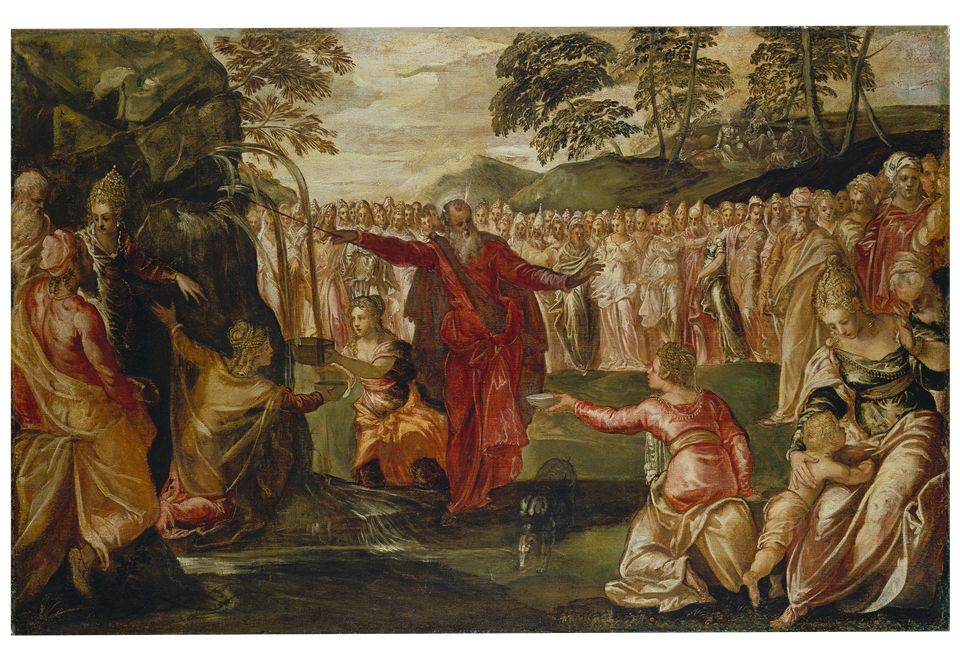
Oil on canvas, 118 x 182 cm, Städel Museum, Frankfurt am Main, © Städel Museum, Frankfurt am Main – ARTOTHEK
No hint of parched aridity here! Titian’s contemporary, Tintoretto, painted the desert in lush shades of green. The scene shows Moses and the Israelites on their arduous journey to the Promised Land. Plagued by thirst, the people of Israel revolt against their leader. Only a miracle can save them now. Moses strikes a rock with his staff and brings forth a stream of water. Dressed in a luminous red garment, Moses stands out against the throng of people in the background. Tintoretto’s handling of paint is strikingly bold – swift cursory brushstrokes are evident all over the canvas.
The painting is a little puzzling: The splendid clothes of the Israelites suggest a grand stage production. People who have spent many long years wandering the desert just don’t look like that! The pearl jewellery of the women and the extravagant hats of the men are painted with loving attention to detail. Their getup is wholly inappropriate. Time and again, the Israelites turned against Moses, even though he had been commanded by God himself to lead them to the Promised Land. By painting them in all their unwarranted finery, Tintoretto underscored their deplorable lack of faith and judgement.
A dreamlike, eerie mood. The figures stand out starkly against the pitch-black background. To render the saturated darkness, the artist Jacopo Bassano painted the scene on a polished slate tablet. The gleaming black stone lends intensity to the oranges, reds and yellows. Bright accents look like touches of reflected light. Bassano’s striking painting captures the moment of Christ’s death – according to the Bible, the land was plunged in sudden darkness.
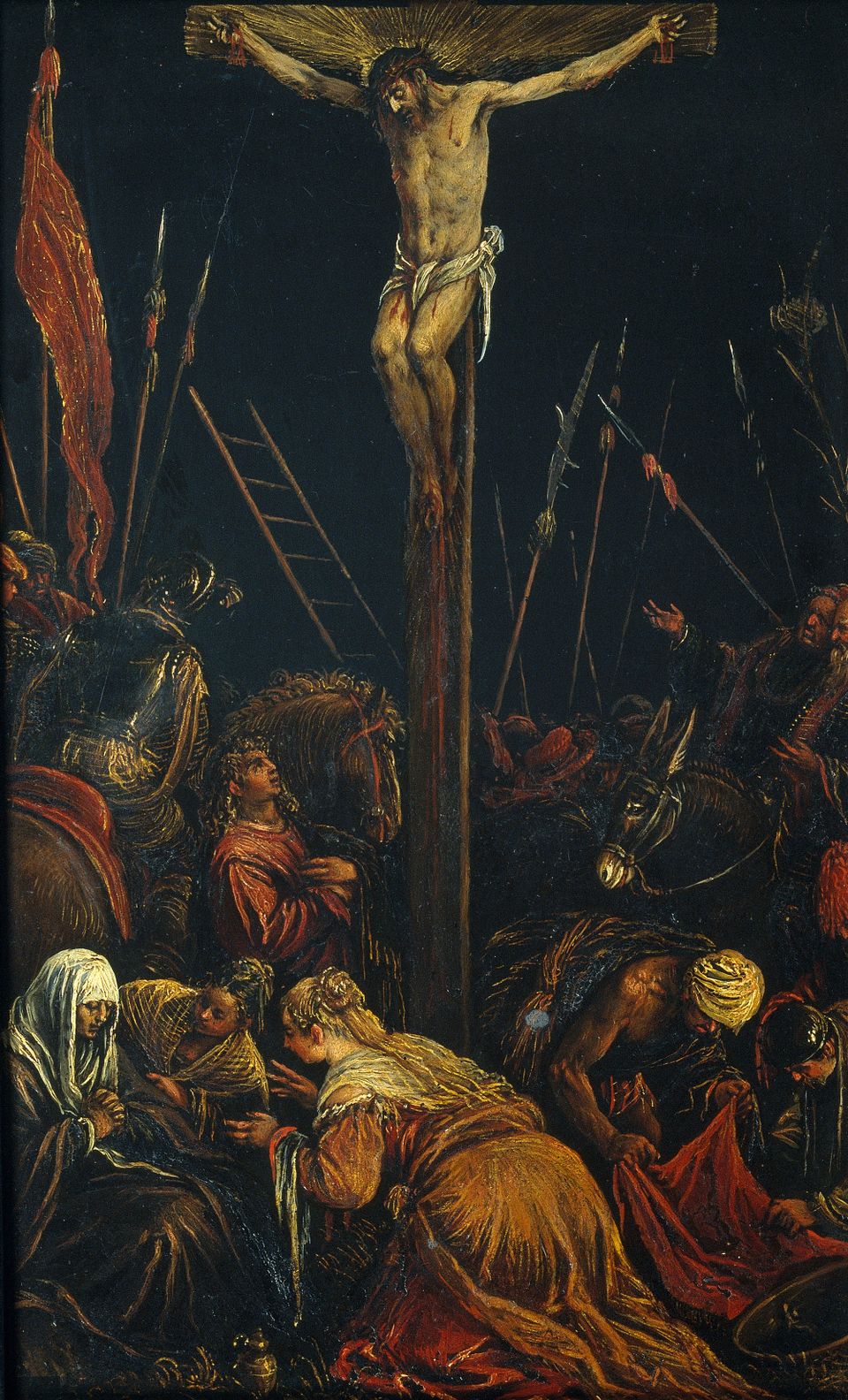
Oil on slate, 49.4 x 29.8 cm, Museu Nacional d’Art de Catalunya, Barcelona, © Museu Nacional d’Art de Catalunya, Barcelona (2019), Photo: Calveras / Mérida / Sagristà
Among all those, who depicted night scenes with shining and reflecting lights, the old Bassano could truly fool the eyes with his natural renderings.
Karel van Mander, Schilder-Boek, Chap.7, 39, 1604 Toggle credits
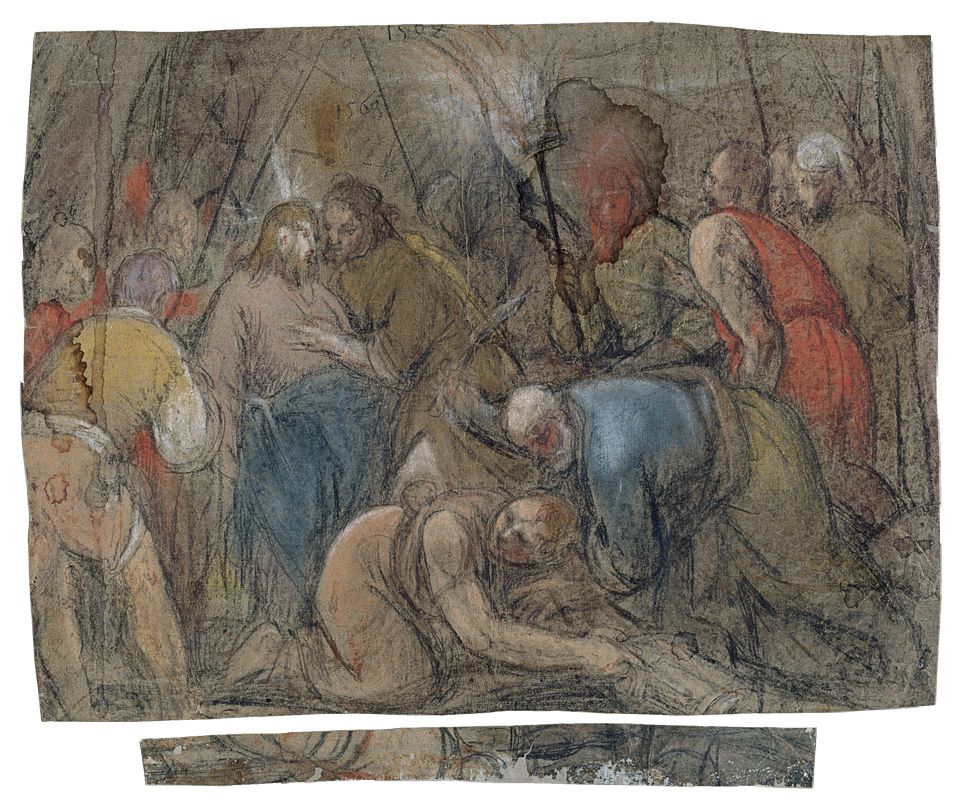
Charcoal and coloured chalk on blue-grey paper, 41.3 x 54.9 cm, Musée du Louvre, Département des Arts Graphiques, Paris, bpk | RMN – Grand Palais, Michèle Bellot
Bassano’s drawing is unusual for the period. He was the first artist to employ coloured chalks to enhance his line drawings! Using blue, yellow and red, he picked out individual figures in the scene. Line and colour coalesce in a lively composition. Touches of white chalk suggest the play of light across the figures.
Line vs Colour
Clearly visible brushmarks and generously applied paint – Titian’s late work occasionally borders on the abstract.
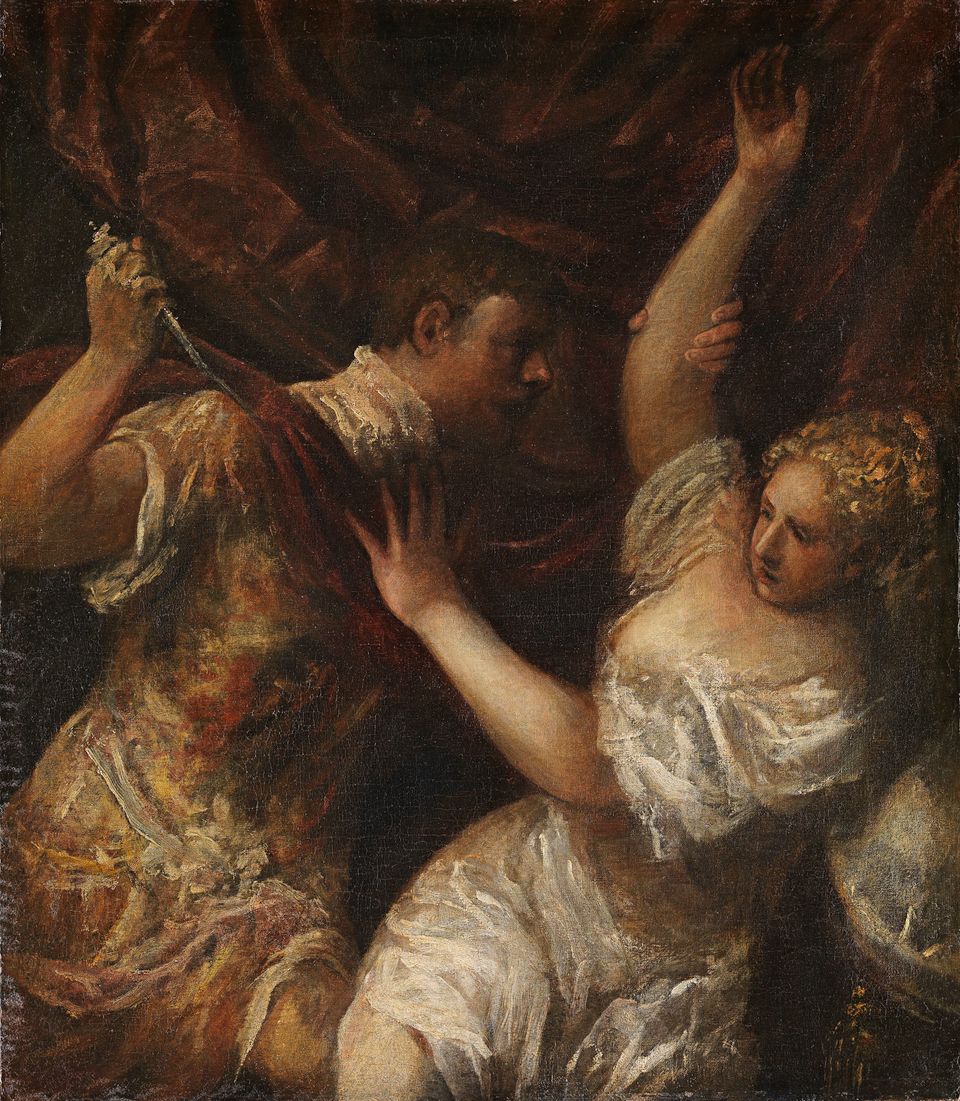
Oil on canvas, 114 x 100 cm, Gemäldegalerie der Akademie der bildenden Künste, Vienna, © Gemäldegalerie der Akademie der bildenden Künste Vienna
Titian rendered the figure of Tarquin with dynamic brushstrokes. The loose, agitated brushwork of his clothing contrasts sharply with the delicate handling of Lucretia’s face. Executed without underdrawing, the painting has a remarkable sketch-like immediacy. Titian’s innovative technique brings out the drama and animation of the scene.
The viewer looks at the distraught figure of Lucretia. Renowned for her beauty and virtue, she is the object of Tarquin’s desire. He threatens to slander her to her husband, to tell him that he caught her committing adultery if she does not now surrender to his advances. An unsettling, highly dramatic story of a rape that ends in Lucretia’s suicide!
If Titian had been in Rome at that time, and had seen the works of Michelagnolo, those of Raffaello, and the ancient statues, and had studied design, he would have done things absolutely stupendous.
Giorgio Vasari, Le Vite, 1568 Toggle credits
Alongside Titian, Jacopo Tintoretto is one of the great Venetian painters. A fervent admirer of Michelangelo, Tintoretto combined the Florentine artist’s formal clarity with the Venetian flair for colour.
Venice and Florence, the two dominant cultural centres of sixteenth-century Italy, became embroiled in a controversy over the respective merits of colore and disegno. The aesthetic debate manifested itself primarily in the art-theoretical treatises of the Renaissance. The experimental colourism of the Venetians was set against the Florentine ideal of disegno, which was based on drawing, perspective and proportion.

Poesia
Painted Poetry
‘Absolutely god-like’ and ‘unrivalled’ – these were the glowing terms Lodovico Dolce used to praise Titian.
The poet and art theorist Dolce described Titian as the greatest of all painters and asserted that not even Michelangelo could match his handling of colour.
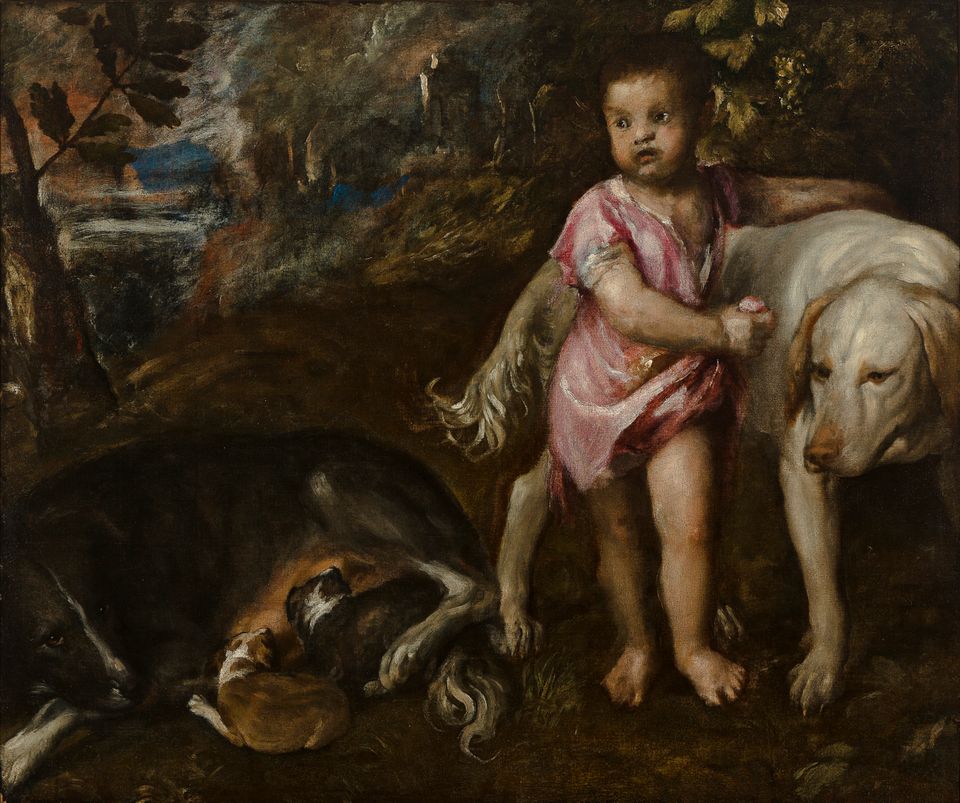
Oil on canvas, 99.5 x 117 cm, Museum Boijmans Van Beuningen, Rotterdam, Museum Boijmans Van Beuningen, Rotterdam | Studio Tromp, Rotterdam
Energetic brushwork and blurred passages of colour! Titian’s painting presents an unsettling scenario. Ominous clouds of smoke darken the sky. A little boy looks back across his shoulder; he is alone in the woods with two large dogs. What is going on? The scene appears to have sprung from Titian’s own imagination. He developed the composition with paint and colour without underdrawing. The rhythmic, improvised manner and the mysterious motifs create a strange atmosphere. In his correspondence, Titian referred to some of his paintings as poesie, the product of fancy. The viewer is left to come up with their own interpretation of the work.
And I think that to be painted by Titian and praised by Aretino would amount to a new generation of people.
Sperone Speroni, Dialogo d'Amore, 1542 Toggle credits
The poet Pietro Aretino and Titian were celebrities of their day. To be praised by Aretino and painted by Titian would have been the highest honour. The writer, satirist and scandalmonger Aretino cultivated contacts with leading political figures, thinkers and artists all over Europe. He was able to provide Titian with ideas and commissions. Engaging in a playful rivalry, the writer and the painter egged each other on to perform to the best of their ability. Aretino heaped extravagant praise on Titian’s compositions, and Titian, in turn, translated Aretino’s poems into paintings.
Imagination and Drama
Bright red blood spills onto a splendid dress. Procris, the daughter of the king of Athens, has collapsed, mortally wounded by a hunting spear.
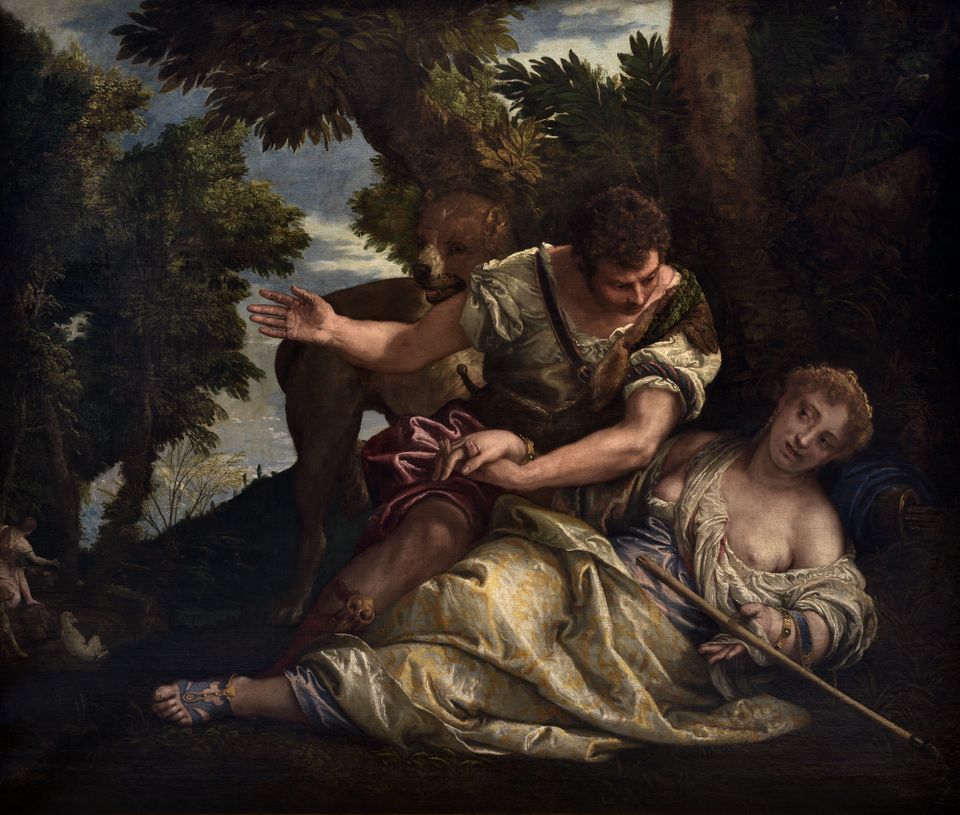
Oil on canvas, 162 x 190 cm, Musée des Beaux-Arts, Strasbourg, Photo Musées de Strasbourg, M. Bertola
A tragic story: Emerging from a thicket, Procris is fatally struck by her own husband, Cephalus, who has mistaken her for his quarry. Driven by jealousy, she had secretly followed Cephalus into the woods. His constant invocation of the name Aura led her to believe he was cheating on her with a nymph. In their last moments together, Cephalus clears up the fatal misunderstanding: his call to Aura (Greek, ‘breeze’) was prompted simply by his desire for fresh air to cool him after the exertions of the hunt.
We painters take the same licence the poets and the jesters take.
Paolo Veronese, Transcripts of his Inquisition Trial, 1573 Toggle credits
Veronese probably knew the story of Cephalus and Procris from the celebrated Metamorphoses by the Roman poet Ovid (43 BC–17 AD). In Veronese’s imaginative rendering of the scene, Procris is wearing a white and gold brocade dress. The folds of the material lend themselves to a fascinating play of light and shadow. Cephalus tenderly holds his dying wife’s hand. Veronese’s flair for poetic compositions made him one of the most sought-after painters of Venice.

Pictures of Nature
Landscape of Dreams
Into the countryside! The painters and poets of Renaissance Venice discovered the countryside as a haven of peace, fertility and unfettered love.
A peasant family working the land. Jacopo Bassano’s painting testifies to the new interest in all things natural and rustic. In the sixteenth century, this tied in with a renewed interest in the myth of the Golden Age. That myth, which goes back to antiquity, describes a period in which mankind lived in a state of primordial freedom, in harmony with nature, and decries civilisation as the source of violence and war.

Blue mountains in the distance, open forests, rolling hills, the farm: Bassano’s painted landscape is inviting. What is now being depicted as beautiful and worthy of an artist's attention, was deemed dangerous and alien for many ceturies. The forest, the mountains and the open seas were seen as populated by demons and monsters, as places that did not provide the shelter that only civilisation offered. The landscapes of the Venetian painters bear witness to a change of mind.
Just a group of trees, but a fully formed work of art! Highly detailed drawings from nature such as this one were a novelty in the sixteenth century. The landscape is an autograph drawing by Titian.

Pen and brown ink, traces of grey printer's ink on beige paper, 21.8 x 31.9 cm, The Metropolitan Museum of Art, New York, © bpk | The Metropolitan Museum of Art
A river, meadows and forests, a church spire and hazy blue mountains – Titian’s famous Madonna of the Rabbit combines the depiction of the Virgin and Child with a pastoral landscape backdrop.

Oil on canvas, 71 x 87 cm, Musée du Louvre, Paris, bpk | RMN – Grand Palais, Thierry Le Mage
Saint Catherine of Alexandria places the Christ child in his mother’s arm. Mary is seated on a cushion in the open countryside. Grass, a basket with an apple and grapes, a rabbit – the modern viewer imagines a picnic. But what is the simple shepherd doing here? Titian’s composition alludes to the idea of Arcadia – an idyllic vision of an unspoiled landscape populated by shepherds. By the way, Titian’s gentle shepherd is a portrait of the aristocratic patron who commissioned the painting, Federico II Gonzaga, Duke of Mantua.
Yearning for Arcadia
The countryside, peace and fertility! Arcadia is a utopian ideal, a place to escape the constraints of society.
But Arcadia is also a real place. A province of the Peloponnesian peninsula of Greece bears that name. The poets of classical antiquity sang the Edenic beauty of the region. In the Renaissance, their verses were rediscovered, admired and re-edited in Venice. Arcadia became the epitome of a life that was uncorrupted by civilisation. The pastoral poetry of antiquity, with its heady mix of landscape description, nostalgia and eroticism, met with great acclaim.
Come, pluck a little flower on my mounds and abandon this dark grotto
Jacopo Sannazaro, Arcadia, 1514 Toggle credits
Nudity in Nature
The landscapes of Venetian poetry and painting are populated not only by shepherds, but also by nymphs. The mysterious female characters embody a life unfettered by social conventions.
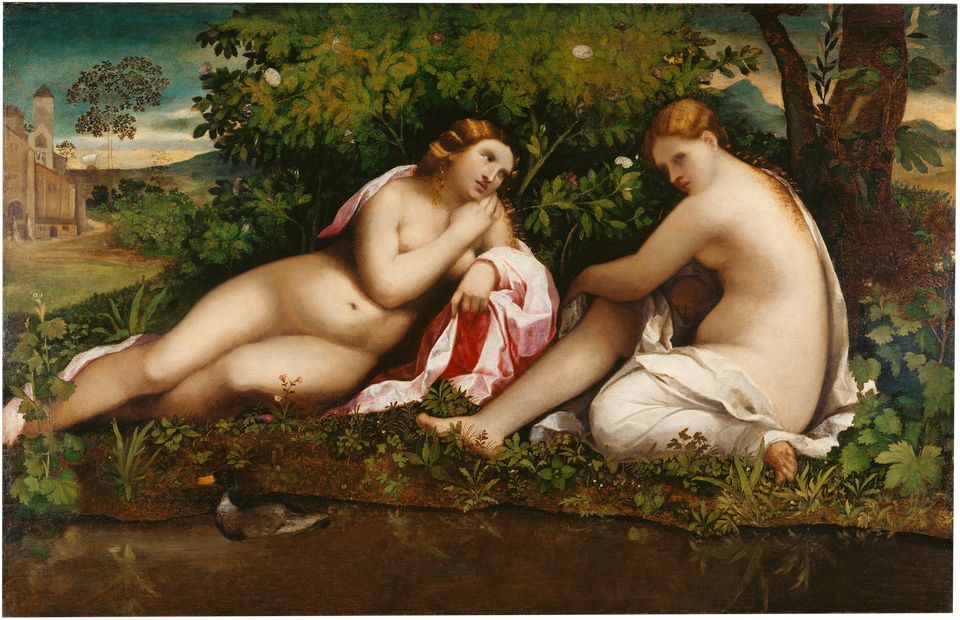
Oil on poplar, 98.3 x 152.4 cm, Städel Museum, Frankfurt am Main, © Städel Museum, Frankfurt am Main – ARTOTHEK
Palma Il Vecchio’s painting of two nymphs resting on a riverbank is as mysterious as it is seductive. Half-covered breasts, bare feet and thighs, a beguiling gaze at the viewer. The two beauties are as alluring as the verdant, fertile landscape they inhabit. The nymphs of Renaissance poetry hunt, swim and disport themselves with lovers. Those kinds of carefree pleasures were distinctly off-limits to respectable sixteenth-century women. The nymphs tempting charms appear within one's reach, yet remain unattainable.
Paris Bordone emphasised the plump curves of his nude Venus. The classical goddess of love admonishes saucy Cupid whose arrow is aimed directly at her pudenda. This playful scene will not leave anyone untouched.
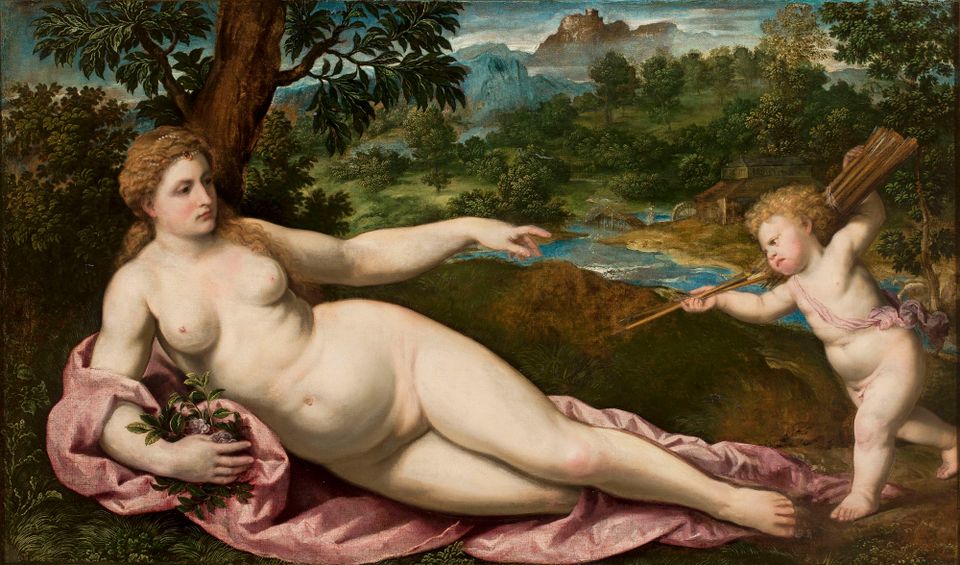
Oil on canvas, 93.7 x 143.3 cm, Muzeum Narodowe, Warsaw, © National Museum in Warsaw
Bordone was inspired by Giorgione’s celebrated Sleeping Venus. Giorgione was the first artist to ever paint a female reclining nude in an expansive landscape setting. Very few paintings in the history of art caused as much of stir. To this day, the dreamy, unselfconscious nude has lost none of her erotic and sensual appeal.
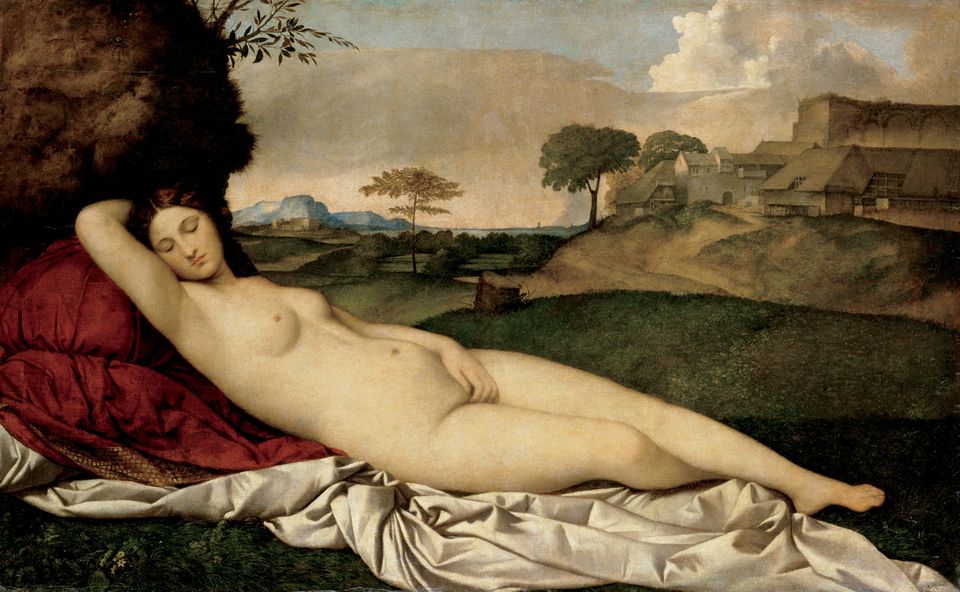
Gemäldegalerie Alte Meister, Dresden
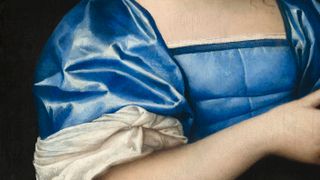
Images of Women
Idealised and Beguiling
One can almost hear the rustle of the lustrous silk. The dark background heightens the creamy gleam of the young woman’s skin.
The young woman’s gaze is pensive and playful in equal measure. Thin threads of smoke waft up from the incense burner in her hands. Is the scent meant to beguile the viewer? The shimmering blue silk of her dress appeals to the sense of touch. The painting is not the portrait of a specific Venetian woman but an ideal representation of female beauty. Many of the Venetian paintings of belle donne (‘beautiful women’) are erotically charged. Sebastiano del Piombo’s painting appeals to all the senses!
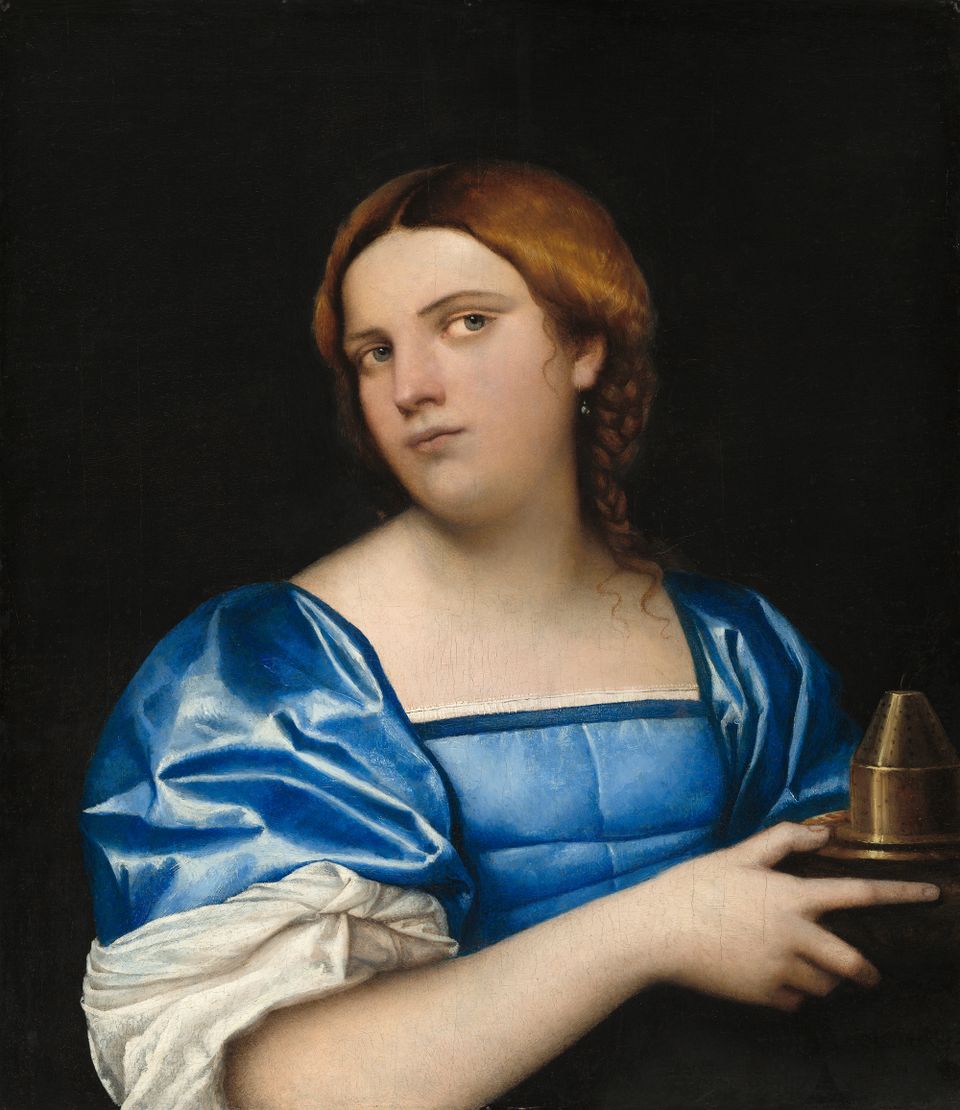
Oil on panel transferred to hardboard, 54.7 x 47.5 cm, National Gallery of Art, Washington, National Gallery of Art, Washington, Samuel H. Kress Collection
Decorous and desirous
A painting full of astonishing details! Does the scene show two virtuous ladies at their toilet? Or is it a warning to the viewer?

A little aristocrat! Titian’s famous portrait shows the two-year-old Clarissa Strozzi from Venice. A state portrait of a child that depicts the child as a child, it is unique in the history of art. The bridal white satin dress spells out the girl’s future as a wife and mother. Back in the day this was regarded as a caring and benevolent gesture. Our definition of childhood and its representation have changed over time. Initially what appears as a cute portrait of a little girl evokes ambivalent feelings.
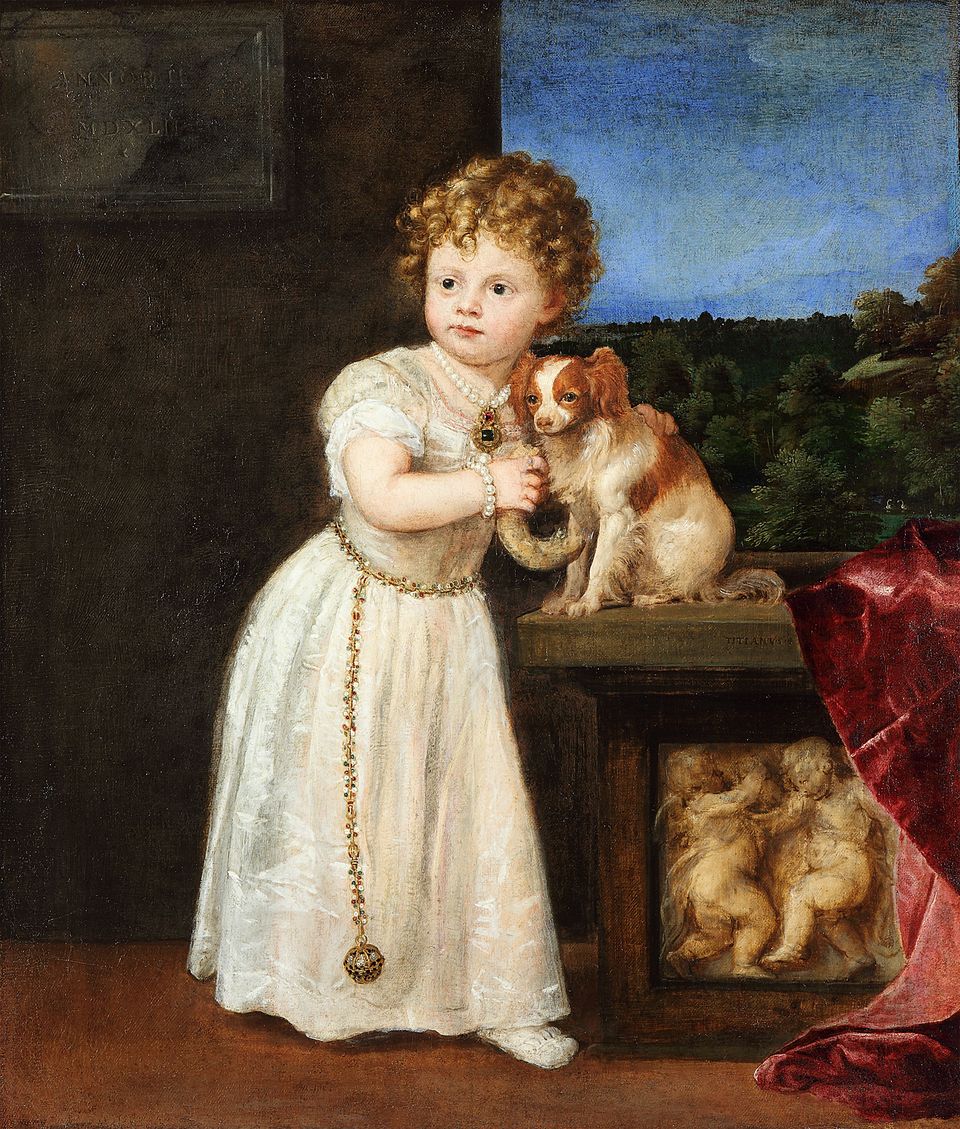
Oil on canvas, 121.7 x 104.6 cm, Staatliche Museen, Gemäldegalerie, Berlin, bpk | Gemäldegalerie, SMB / Christoph Schmidt
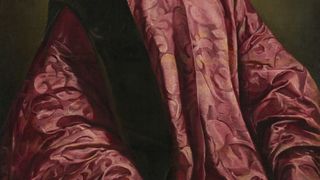
Images of Men
A Show of Self-Assuredness
Velvety, rough or silky smooth? The fabric of the sumptuous garment is depicted in such detail that one wants to reach out and touch it.

Oil on canvas, 86 x 69.5 cm, Kassel, Museumslandschaft Hessen Kassel, Gemäldegalerie Alte Meister, bpk | Museumslandschaft Hessen Kassel
The vinous red and the wide sleeves of the robe are symbols of social status. Apart from the doge, only physicians and high-ranking diplomats were allowed to wear such clothing. The sitter is probably the Venetian Bernardo Morosini. He was in close contact with the painter Jacopo Bassano.
Anybody who was anybody had their portrait painted. Portraits were an important part of sixteenth-century culture. From rulers, diplomats and merchants to scholars – portraits were a means of communication, networking and broadening one’s sphere of influence. Social status is conveyed by details such as clothing, accessories, furniture and stance. But Renaissance portraits also offer insights into the personal achievements, virtues and values of the sitter.
A man in a dignified pose. The nobleman Daniele Barbaro was one of the most respected scholars of his time. He proudly presents his life’s work. The book he is opening with his left hand is his translation of and commentary on Vitruvius’s famous architectural treatise De Architectura written in the first century BC. Fascinated with the relationship between science and the arts, Barbaro saw the study of architecture as a key to understanding the world.
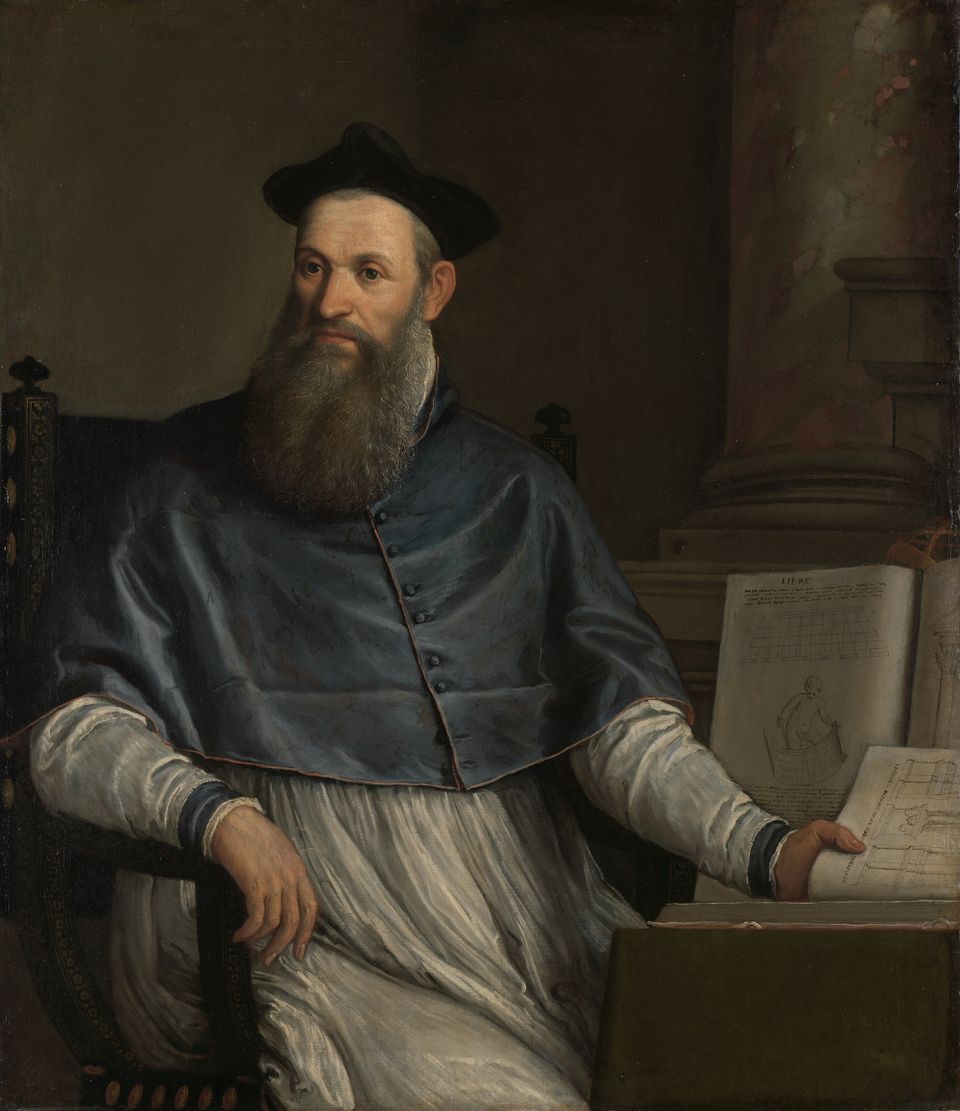
Oil on canvas, 121 x 105.5 cm, Rijksmuseum, Amsterdam, © Rijksmuseum, Amsterdam 2019
The Lustre of Power
Praising Titian’s handling of this suit of armour, the poet Aretino claimed that its lustrous sheen pierced the viewer’s eye like an arrow.
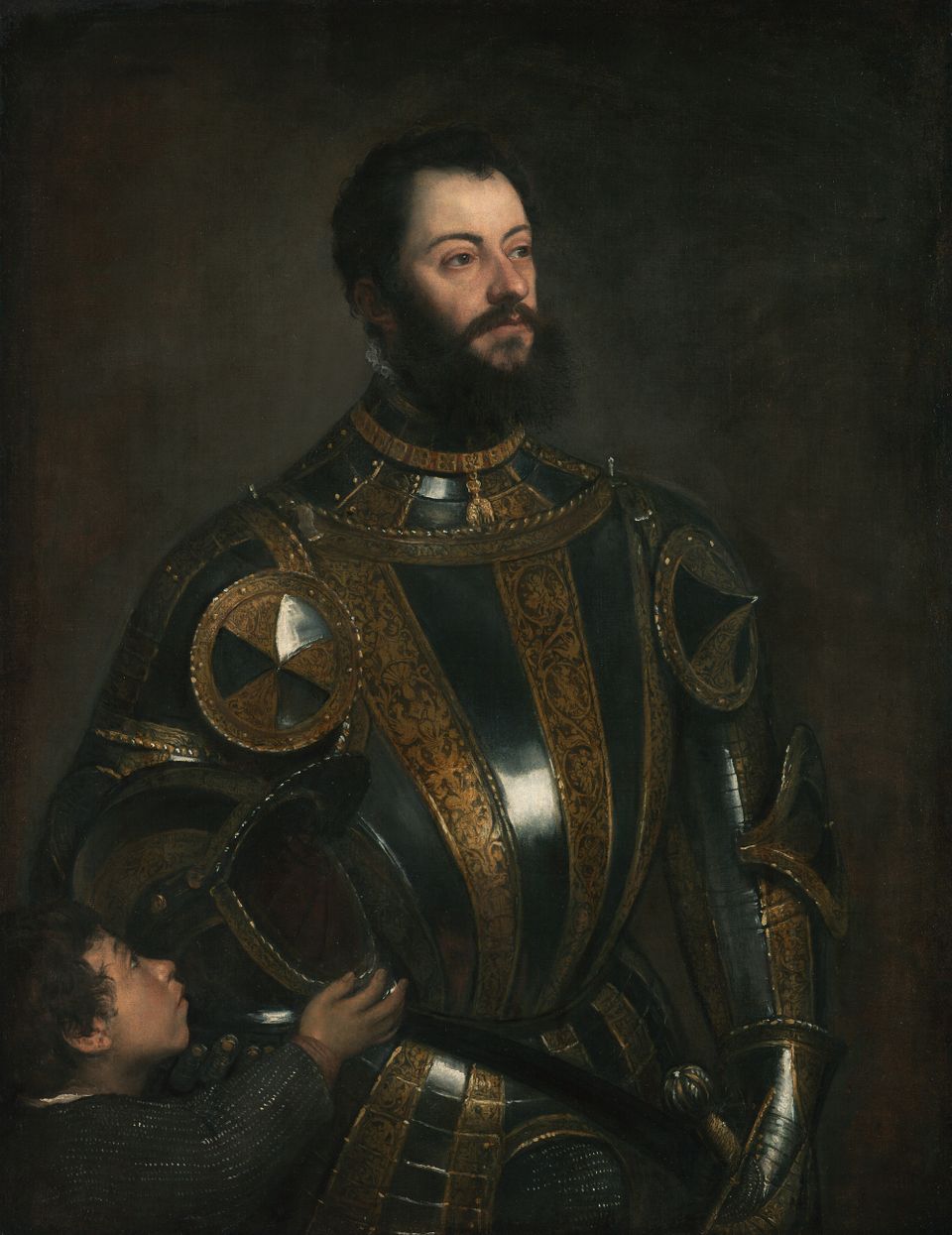
Oil on canvas, 110 x 80 cm, The J. Paul Getty Museum, Los Angeles, Digital image courtesy of the Getty’s Open Content Program, The J. Paul Getty Museum, Los Angeles
The nobleman shown here is Alfonso d’Avalos. He is wearing the collar of the Order of the Golden Fleece. To this day, the members of this exclusive order are appointed by the King of Spain. The great Habsburg emperor, Charles V, bestowed the honour on Alfonso d’Avalos in 1531.
Charles V admired Titian. He made him the principal painter to the imperial court and even conferred a knighthood upon him – a hitherto unthinkable honour for an artist. Even in old age, Titian remained one of the most successful painters of his time. He died, nearly ninety years old, in 1576 during a devastating plague epidemic that killed almost a third of the population of Venice.
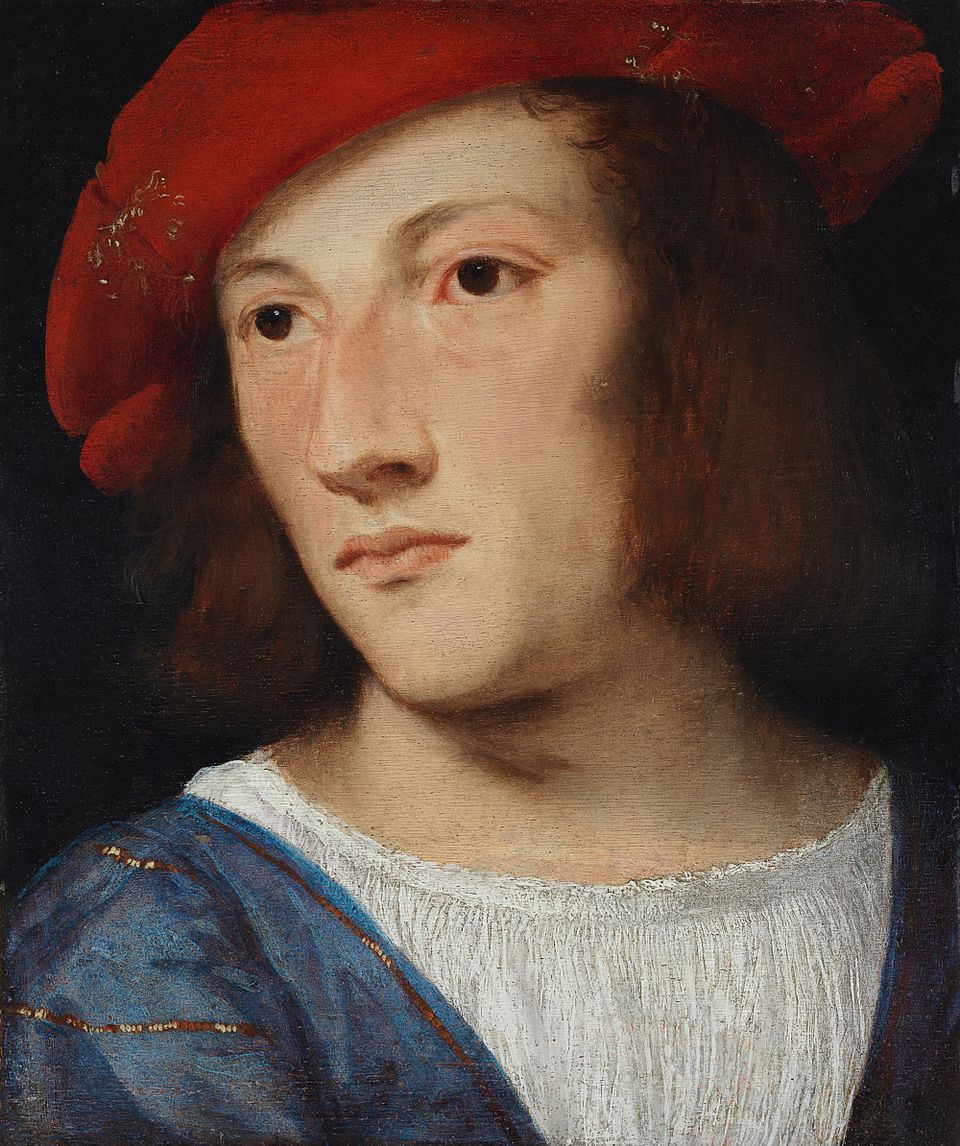
Oil on poplar, 20 x 17 cm, Städel Museum, Frankfurt am Main, © Städel Museum, Frankfurt am Main – ARTOTHEK
Fluid contours, visible brushstrokes and a free handling of glowing colour – more than any other artist, Titian embodies the art of Venice. Few cities had as profound an impact on the course of the history of art! The atmosphere, vibrancy, heightened emotion and painterly energy of the sixteenth-century Venetian school went on to have a lasting effect on the development of Western art. We can catch glimpses of this fascinating period not only in the churches, secular buildings and streets of the city but also in the poetic paintings of Renaissance Venice.
Hint
The open sea! The monumental panorama of water and waves is more than two metres wide and was printed from twelve separate blocks onto twelve sheets of paper.
The city in the background is reminiscent of Venice. Even though the subject of the print is the biblical story of the crossing of the Red Sea – with the Egyptian army being submerged on the left, while Moses and the Israelites reach dry land on the right – the image is clearly inspired by the artist’s familiarity with the sea. A drawing by Titian served as the model for the impressive woodcut. Rolling waves, ominous clouds, rugged rocks and countless figures invite viewers to take a closer look.
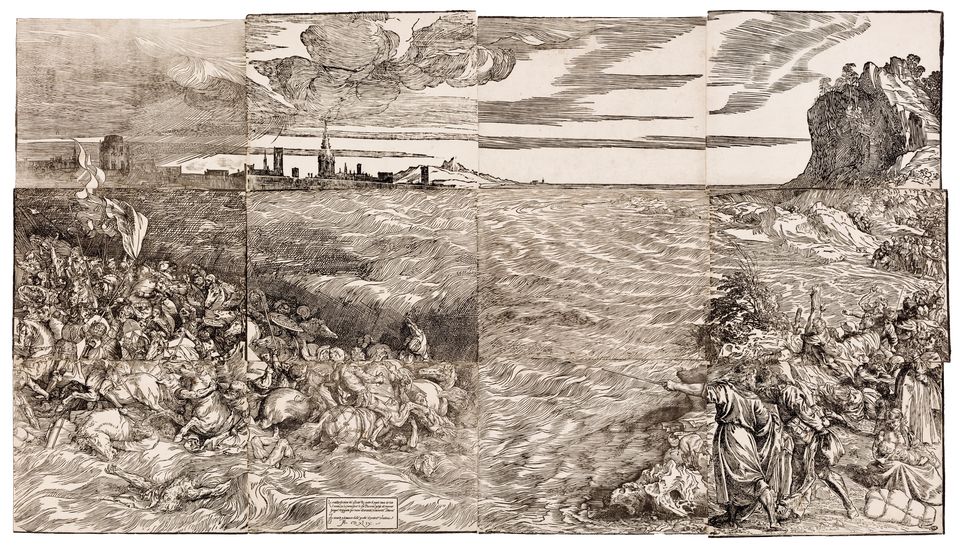
Woodcut in twelve blocks, second state of two, published by Domenico dalle Greche, Venice 1549, c. 122 / 123.5 × 220.5 / 222.5 cm | Frankfurt am Main, Städel Museum, Graphische Sammlung, inv. no. 23758 D

Woodcut in twelve blocks, second state of two, published by Domenico dalle Greche, Venice 1549, c. 122 / 123.5 × 220.5 / 222.5 cm | Frankfurt am Main, Städel Museum, Graphische Sammlung, inv. no. 23758 D
